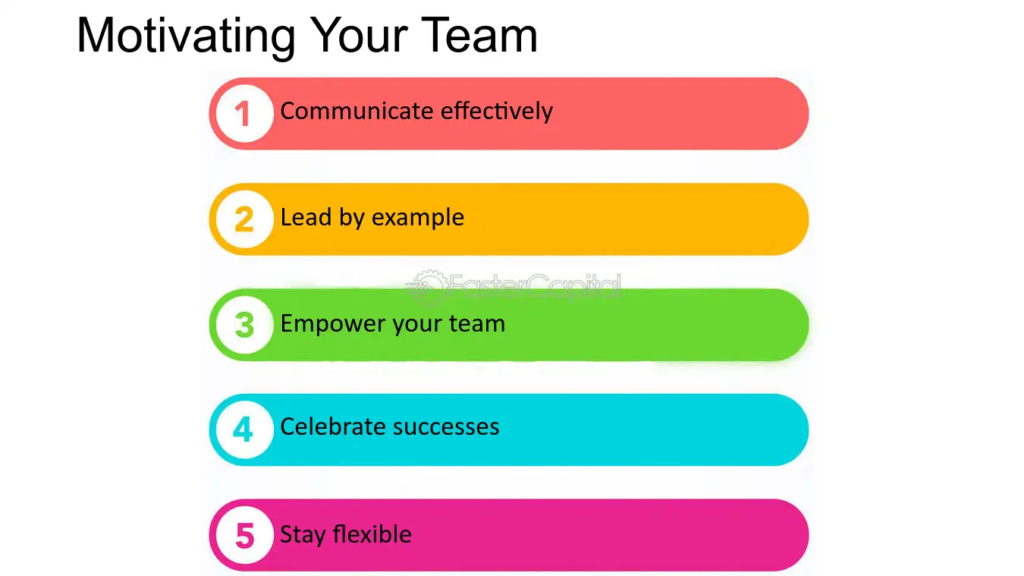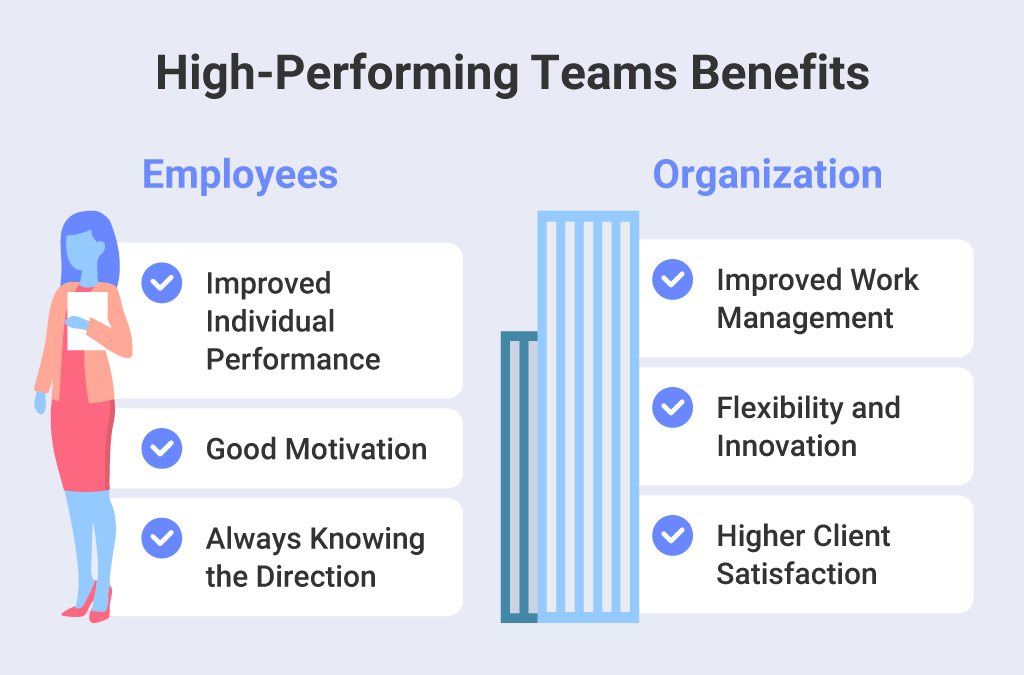Sales Management – Workshop 1 (Representative vs. Manager)

The Appleton Greene Corporate Training Program (CTP) for Sales Management is provided by Mr. Dugan Certified Learning Provider (CLP). Program Specifications: Monthly cost USD$2,500.00; Monthly Workshops 6 hours; Monthly Support 4 hours; Program Duration 12 months; Program orders subject to ongoing availability.
If you would like to view the Client Information Hub (CIH) for this program, please Click Here
Learning Provider Profile

To be advised.
MOST Analysis
Mission Statement
Learn the fundamental importance of Representative vs. Manager to enhance productivity and effectiveness in sales. Understanding the Eisenhower Matrix: Explore the Eisenhower Matrix and its role in helping you categorize tasks for optimal time management. First – Put Out the Fire. Then Remodel the House: Discover the concept of addressing urgent matters before focusing on long-term improvements in your sales approach. Exploring the Effort – Impact Matrix: Delve into the Effort-Impact Matrix as a tool to assess and prioritize tasks based on their potential impact and required effort.
Objectives
01. Market Changes: departmental SWOT analysis; strategy research & development. Time Allocated: 1 Month
02. Strategy & Execution: departmental SWOT analysis; strategy research & development. Time Allocated: 1 Month
03. Transactional vs. Transformational Leadership: departmental SWOT analysis; strategy research & development. Time Allocated: 1 Month
04. Coaching & Developing: departmental SWOT analysis; strategy research & development. Time Allocated: 1 Month
05. Building Relationships: departmental SWOT analysis; strategy research & development. Time Allocated: 1 Month
06. Strategic Thinking: departmental SWOT analysis; strategy research & development. Time Allocated: 1 Month
07. Role of Vision: departmental SWOT analysis; strategy research & development. 1 Month
08. Cultivating High-Performance: departmental SWOT analysis; strategy research & development. Time Allocated: 1 Month
09. Decision-Making: departmental SWOT analysis; strategy research & development. Time Allocated: 1 Month
10. Empowering Teams: departmental SWOT analysis; strategy research & development. Time Allocated: 1 Month
Strategies
01. Market Changes: Each individual department head to undertake departmental SWOT analysis; strategy research & development.
02. Strategy & Execution: Each individual department head to undertake departmental SWOT analysis; strategy research & development.
03. Transactional vs. Transformational Leadership: Each individual department head to undertake departmental SWOT analysis; strategy research & development.
04. Coaching & Developing: Each individual department head to undertake departmental SWOT analysis; strategy research & development.
05. Building Relationships: Each individual department head to undertake departmental SWOT analysis; strategy research & development.
06. Strategic Thinking: Each individual department head to undertake departmental SWOT analysis; strategy research & development.
07. Role of Vision: Each individual department head to undertake departmental SWOT analysis; strategy research & development.
08. Cultivating High-Performance: Each individual department head to undertake departmental SWOT analysis; strategy research & development.
09. Decision-Making: Each individual department head to undertake departmental SWOT analysis; strategy research & development.
10. Empowering Teams: Each individual department head to undertake departmental SWOT analysis; strategy research & development.
Tasks
01. Create a task on your calendar, to be completed within the next month, to analyze Market Changes.
02. Create a task on your calendar, to be completed within the next month, to analyze Strategy & Execution.
03. Create a task on your calendar, to be completed within the next month, to analyze Transactional vs. Transformational Leadership.
04. Create a task on your calendar, to be completed within the next month, to analyze Coaching & Developing.
05. Create a task on your calendar, to be completed within the next month, to analyze Building Relationships.
06. Create a task on your calendar, to be completed within the next month, to analyze Strategic Thinking.
07. Create a task on your calendar, to be completed within the next month, to analyze Role of Vision.
08. Create a task on your calendar, to be completed within the next month, to analyze Cultivating High-Performance.
09. Create a task on your calendar, to be completed within the next month, to analyze Decision-Making.
10. Create a task on your calendar, to be completed within the next month, to analyze Empowering Teams.
Introduction
The Essence of Sales Leadership
Welcome to Sales Management, a course meticulously designed for professionals eager to master the art and science of effective sales leadership. In this enlightening journey, we delve into the complex interplay between management and visionary leadership, two pivotal roles that significantly influence the success of sales teams and, by extension, the entire organization.
In the realm of sales, the line between managing and leading can often appear blurred. However, this course aims to demystify that distinction, illuminating how the subtleties between a sales manager and a sales leader can have profound implications. A sales manager is typically seen as the operational backbone of a team, adept at setting targets, tracking performance, and ensuring the smooth execution of sales strategies. These skills are undoubtedly essential, yet they represent just one facet of sales team success.
On the other hand, a sales leader is likened to a visionary, someone who transcends daily operations to chart a course towards long-term excellence. This course will explore how sales leaders infuse strategic thinking and innovation into their teams, aligning sales objectives with the broader vision of the organization. They are the architects of a future where the sales team not only meets its current targets but also evolves to meet the challenges of an ever-changing market landscape.
Throughout this course, participants will engage in a multifaceted exploration of these roles. We will dissect the characteristics that define effective sales management and visionary leadership, understand their unique contributions, and learn how to blend these approaches for maximum impact. Interactive sessions, real-world case studies, and expert insights will form the backbone of this learning experience, providing you with the tools and knowledge to transform your approach to sales leadership.
By the end of this course, you will have a clearer understanding of how strategic vision and effective management coalesce to create a dynamic and successful sales environment. You will be equipped with the skills to not just manage a sales team, but to inspire and lead it towards sustained growth and success, positioning your organization for a prosperous future. Welcome to a journey of transformation and empowerment in sales leadership.

Knowing the Distinction
Understanding the distinction between a sales manager and a sales leader is crucial for several reasons:
1. Role Clarity and Effective Leadership
Role Clarity and Effective Leadership play pivotal roles in the success of any sales organization. Understanding the distinct functions of a manager and a leader is essential for aligning one’s approach with their specific role, thus enhancing overall effectiveness. A sales manager typically concentrates on operational efficiency, managing the daily tasks essential for the smooth functioning of the sales team. Their primary focus is on immediate results – ensuring that the team consistently meets its sales targets through effective execution of strategies and processes.
In contrast, a sales leader adopts a more strategic perspective. Rather than just focusing on the short-term goals, they are concerned with the long-term vision and development of the team. A leader’s role extends beyond mere management; it involves inspiring and guiding the team towards broader organizational objectives. They strive to align the sales goals with the company’s overarching vision, ensuring that the efforts of the sales team contribute meaningfully to the company’s long-term success.
Having a clear understanding of these roles is crucial. It allows individuals to adopt a leadership style that is most effective for their specific position and objectives. Managers can focus on refining processes and achieving efficiency, while leaders can concentrate on strategic planning, team development, and fostering a culture that aligns with the company’s vision. This distinction not only aids in personal leadership development but also ensures that the team is guided and managed in a way that maximizes its potential and aligns with the organization’s goals.
2. Optimizing Team Performance
Optimizing Team Performance is a critical aspect of effective sales leadership. Leaders who recognize the distinction between managerial and leadership roles are better positioned to enhance their team’s overall performance. Sales managers play a vital role in ensuring the efficiency of the sales process. Their focus lies in the meticulous management of daily operations, adherence to sales protocols, and achievement of immediate targets. This approach ensures that the team operates like a well-oiled machine, consistently hitting short-term goals and maintaining operational excellence.
However, the role of a leader extends beyond these managerial tasks. Sales leaders bring a different set of skills to the table – they are the motivators, the visionaries, the ones who inspire and instill a sense of purpose in their team. Their role is to cultivate a forward-thinking mindset, encouraging team members to look beyond the daily grind and envision the larger picture. By fostering an environment of innovation and continuous improvement, leaders not only drive their team towards current objectives but also prepare them for future challenges.
The key to maximizing team performance lies in balancing these two facets. When a leader effectively combines the precision of managerial skills with the inspirational qualities of leadership, the result is a dynamic, adaptable, and high-performing team. This balanced approach ensures that while the team is efficient and goal-oriented in the short term, it is also innovative, motivated, and strategically aligned with long-term objectives. This synergy between management and leadership is essential for fostering a team that is not only successful in achieving its current targets but is also resilient and prepared for future growth and change.
3. Strategic Decision Making
Strategic Decision Making is a crucial competency for sales leaders, particularly those who understand the subtleties between managing and leading. This understanding equips them with a unique foresight essential for making informed, long-term strategic decisions. Sales managers, adept in their role, concentrate on optimizing current resources and refining existing processes. Their expertise lies in managing the present – ensuring the team operates efficiently and meets immediate targets. This focus is vital for the day-to-day success of any sales operation.
However, the role of a sales leader transcends these immediate concerns. Leaders are visionaries who look beyond the horizon of current operations. They are tasked with planning for future growth and preparing the team for upcoming changes and challenges. This aspect of leadership is particularly critical in today’s fast-paced business world, where market dynamics are constantly evolving. Leaders’ ability to anticipate market trends, understand emerging customer needs, and foresee potential opportunities or threats is key to staying ahead of competitors.
Such strategic foresight is not just about responding to immediate market changes; it’s about shaping the future trajectory of the sales team and, by extension, the organization. Leaders who master this balance of managing the present while planning for the future ensure the long-term sustainability and resilience of their teams. They navigate through uncertainties and guide their teams toward continued success and growth, making strategic decision-making an indispensable skill in the repertoire of effective sales leadership.

4. Career Development and Succession Planning
Career Development and Succession Planning are integral components of organizational growth, heavily reliant on understanding the distinct roles of sales managers and leaders. This clarity is crucial for personal career progression and for cultivating the next generation of leaders. Recognizing the unique skills and attributes required for each role allows current leaders to effectively identify and mentor potential successors. This process is essential for building a strong leadership pipeline, ensuring the organization’s future is in capable hands. By investing in this development, leaders not only secure the organization’s continuity but also foster a culture of growth and opportunity, vital for long-term success.
5. Cultural Influence
Cultural Influence is profoundly impacted by leaders who discern the difference between managing and leading. Understanding this distinction allows them to more effectively sculpt the organizational culture. Managers are essential in implementing and upholding policies and procedures, ensuring operational consistency. However, leaders play a pivotal role in embedding core values within the organization. They are the catalysts for fostering a culture of innovation, encouraging creativity, and nurturing a mindset geared towards growth and adaptability. This leadership approach is crucial in creating a work environment that not only adheres to current standards but also evolves and thrives in the face of future challenges.
6. Enhanced Employee Engagement and Retention
Enhanced Employee Engagement and Retention are key outcomes for leaders who master both management and visionary leadership. Such leaders excel not only in efficiently managing their teams but also in inspiring and nurturing their members’ professional growth. This dual capability leads to a more motivated, engaged, and committed workforce. When employees feel valued and see opportunities for personal development, their satisfaction and loyalty to the organization increase. Consequently, this holistic leadership approach significantly reduces turnover rates, as team members are more inclined to stay and grow within a supportive and forward-thinking environment, benefiting both the individuals and the organization.
In summary, understanding the distinction between a sales manager and a sales leader allows for more effective, strategic, and inspirational leadership, leading to improved team performance, better decision-making, a strong leadership pipeline, a positive organizational culture, and higher employee engagement and retention.
Workshop Objectives:
Through this workshop, we aim to:
1. Clarify the distinct roles and responsibilities of sales managers and sales leaders.
2. Explore the transformational impact of visionary leadership in sales.
3. Equip you with the skills and insights to transition from a managerial mindset to a leadership paradigm.
4. Foster an understanding of strategic thinking, innovation, and team empowerment in sales.
5. Cultivate a learning environment where you can share experiences, challenges, and insights with peers.
Engaging Journey Ahead:
As we progress through diverse modules, this course offers a deep dive into pivotal aspects of sales leadership. We’ll explore strategic execution, unraveling how visionary leaders align their team’s efforts with overarching organizational goals. A key focus will be the nuanced distinction between transformational and transactional leadership, illuminating how these styles impact team dynamics and overall performance.
Our journey will further encompass the vital elements of team coaching and development. Here, you’ll learn not just to direct, but to nurture and grow your team’s capabilities, fostering an environment where each member can flourish and contribute optimally. Additionally, we’ll master the art of building influential relationships, a cornerstone of effective leadership. This segment is dedicated to enhancing your skills in creating robust, trust-based relationships within your team and across the organization.
Each session is meticulously crafted to go beyond mere knowledge transfer. You’ll engage in critical thinking, challenging and refining your understanding of sales leadership. Practical exercises will provide hands-on experience, embedding learning in real-world scenarios. Furthermore, collaborative learning will be a key component, allowing you to share insights and learn from the diverse experiences of your peers. This course isn’t just a learning experience; it’s an opportunity to transform your approach to sales leadership, equipping you with the tools to lead more effectively and drive impactful results.

Your Role in This Journey:
Your active participation is the cornerstone of this course. Engaging fully in this journey means more than just absorbing information; it involves an interactive exchange of experiences, ideas, and challenges. The richness of this course is significantly amplified when you share your unique experiences. Whether it’s a successful strategy you’ve implemented, a leadership challenge you’ve faced, or an innovative approach to a common problem, your contributions will add depth and perspective to our collective understanding.
Asking questions is another critical aspect of your participation. Inquiry drives deeper learning and uncovers insights that might otherwise remain hidden. Your questions will not only aid your understanding but will also provoke thought and discussion among your peers, creating a dynamic learning environment.
Applying the concepts and strategies discussed in this course to real-world scenarios is where the true value of learning materializes. By relating theories to practical situations from your professional life, you’ll gain a more profound and practical understanding of the material. This application not only solidifies your learning but also helps in visualizing how these strategies can be implemented effectively in your day-to-day leadership role.
Remember, your engagement is not just beneficial for you; it enriches the entire learning experience for everyone involved. The collective wisdom and shared experiences of the group create a vibrant, interactive, and deeply enriching learning environment. This course is not just about what you learn, but also about what you contribute and how you apply it in real-world contexts.
Conclusion:
As we embark on this journey together, our goal is to transform your perspective on sales leadership. By the end of this course, you will not only understand the difference between managing sales and leading sales but also be equipped to drive impactful change in your teams and organizations.
Welcome aboard, and let’s redefine the future of sales leadership together!
Executive Summary
Chapter 1: Market Changes
In the dynamic business landscape, the ability to adapt to market changes is crucial for sales success. This adaptability is shaped by a blend of managerial reactivity and leadership proactivity, each playing a pivotal role in guiding sales teams through the ever-shifting market environment.
Managerial reactivity focuses on responding swiftly to immediate market changes. Managers adept in this approach excel in crisis management and quick decision-making, adjusting tactics based on current market conditions and customer feedback. This style is characterized by a high level of alertness to market trends, competitor actions, and customer behaviors. For example, reactive managers might quickly launch promotions in response to competitors or reallocate resources to trending product lines. While this approach ensures rapid response and short-term gains, it may lack long-term strategic depth and lead to a cycle of constant adjustments.

In contrast, leadership proactivity in sales involves anticipating future market trends and preparing the team for upcoming challenges. Proactive leaders, with their strategic foresight and vision, foster innovation and long-term planning. They conduct thorough market analysis, engage in scenario planning, and prioritize customer feedback to predict future needs. This approach not only prepares the team for future market dynamics but also fosters a culture of innovation and continuous improvement.
The comparative analysis between these two approaches highlights their distinct impacts on team performance and adaptability. Reactive strategies are crucial in fast-paced, volatile markets, providing immediate solutions and maintaining competitiveness. However, they might risk overlooking broader team development and innovation. Proactive strategies, conversely, build resilience and adaptability, essential for long-term success, though they may be less agile in immediate response.
A case study exemplifying this is Apple Inc., which transitioned from reactive to proactive sales leadership. Under Steve Jobs, Apple shifted its focus to innovative product development, customer experience, and market anticipation, leading to sustained growth and market leadership. This shift highlights the effectiveness of proactivity in sales, emphasizing foresight and customer-centricity.
Developing foresight and adaptability in sales involves continuous market analysis, customer feedback, and staying abreast of technological advancements. Sales leaders foster these traits by promoting a culture of learning and maintaining a flexible organizational structure. Training programs should focus on developing both reactive and proactive skills, covering market analysis, crisis management, and strategic planning, enhancing team resilience and adaptability.
In summary, adapting to market changes in sales requires a balanced approach, combining the immediacy of managerial reactivity with the strategic depth of leadership proactivity. This balance ensures that sales strategies are both responsive to current market demands and aligned with long-term growth objectives. Effective sales management, therefore, hinges on the ability to seamlessly integrate both approaches, fostering a team that is agile, innovative, and prepared for the future.

Chapter 2: Strategy & Execution
Sales leadership is integral to guiding a team beyond just meeting targets; it involves setting a vision, crafting strategies, and motivating a team to achieve exceptional results. Effective sales leadership is characterized by a balance between strategy and execution. Strategy in sales leadership focuses on long-term planning and decision-making, understanding market dynamics, identifying growth opportunities, and aligning sales objectives with organizational goals. Conversely, execution deals with the practical aspects of implementing these strategies, managing the sales team’s daily operations to ensure that strategic plans are translated into actionable steps.
The role of a sales leader in strategy development is crucial in steering an organization toward sustained success. This role goes beyond managing a sales force; it entails crafting a roadmap that aligns with the organization’s long-term objectives. Key elements of strategic planning in sales include market analysis, goal setting, resource allocation, and risk assessment. Developing a long-term vision involves synthesizing these elements into a cohesive strategy that guides the sales team, requiring foresight and effective communication to ensure team alignment with shared goals.
Balancing long-term strategies with immediate execution is essential for any sales organization’s success. This balance involves ensuring that long-term goals set by sales leaders resonate with the sales team’s daily activities. Effective communication of the strategic vision, breaking down the overarching strategy into manageable targets, and continual monitoring and adjustment are vital for aligning daily activities with strategic objectives.
Leadership skills for effective strategy and execution in sales are crucial, where balancing long-term vision with immediate results can determine an organization’s success. Essential leadership qualities for strategic planning include analytical thinking, a visionary outlook, decisiveness, and adaptability. Skills needed for effective execution in sales management include goal-orientation, communication skills, motivational ability, and problem-solving. Developing a dual-focus mindset in sales leadership involves integrative thinking, flexibility, continuous learning, and a collaborative approach.
However, challenges in strategy development and execution are inherent in the dynamic sales field. Leaders face changing market conditions, technological advancements, and evolving customer preferences, requiring an adaptive approach. Successfully navigating these challenges requires sales leaders to foster a culture of continuous learning and flexibility, encouraging proactive thinking and innovation. Regular strategy reviews, feedback mechanisms, and ongoing training and development are crucial for adapting strategies to changing market dynamics, ensuring long-term success.

Chapter 3: Transactional vs. Transformational Leadership
Transactional and transformational leadership styles in sales are distinct yet integral to the dynamics and success of sales teams. Transactional leadership, based on clear exchanges between the leader and followers, emphasizes structure, defined roles, and performance-based rewards or penalties. This results-oriented approach focuses on achieving set targets and maintaining the status quo, using incentives and disciplinary measures to motivate the team towards short-term goals.
Conversely, transformational leadership aims to inspire and motivate employees at a deeper level, fostering innovation, personal development, and a resonating vision. This style is about instilling enthusiasm and commitment, focusing on long-term goals, and cultivating a shared purpose. Transformational leaders empower their teams, encouraging creativity and facilitating individual growth, leading to a more engaged and cohesive team.

In sales, the right leadership approach significantly impacts the team’s morale, performance, and adaptability. Transactional leadership efficiently drives immediate results, but transformational leadership is essential for nurturing a forward-thinking, resilient sales force. Effective sales leaders often blend both styles, tailoring their approach to suit the team’s needs and the organization’s objectives.
Transactional leadership in sales, exemplified in call centers or telemarketing companies, involves setting performance targets and rewarding or penalizing based on achievement. This approach motivates sales teams towards quantifiable goals and operational efficiency. However, it may not foster long-term employee engagement, creativity, or loyalty, focusing mainly on short-term achievements.
Transformational leadership, as seen in companies like Apple under Steve Jobs, inspires and motivates teams towards collective goals, extending beyond sales targets. This style leads to higher employee engagement, job satisfaction, and a more adaptive sales force. However, it might sometimes overlook the importance of short-term sales targets.
Integrating these leadership styles in sales offers a balanced approach, combining the result-driven focus of transactional leadership with the inspirational qualities of transformational leadership. This hybrid model creates a dynamic and adaptable sales force, capable of meeting immediate targets while preparing for future challenges. Strategies include setting specific goals linked to both immediate rewards and long-term development, cultivating a culture that values achievement and innovation, and effectively communicating the organization’s vision.
Future trends in sales leadership are increasingly leaning towards a more transformational approach due to evolving market demands. The dynamic marketplace, characterized by rapid technological advancements and changing consumer behaviors, requires sales leaders who are adaptive, innovative, and visionary. This shift emphasizes inspiration, innovation, and personal development, fostering a proactive and agile sales force capable of navigating modern market complexities.

Chapter 4: Coaching & Developing
Coaching in sales is crucial for the success and growth of salespeople and teams, going beyond mere instruction to include guiding, mentoring, and nurturing. In the ever-evolving sales world, coaching is key to professional development, driving sales effectiveness and fostering a continuous learning culture. Sales managers often focus on immediate performance, employing a transactional coaching style to achieve short-term goals and improve skills directly tied to performance metrics. This approach is vital for meeting sales targets and adhering to company standards.
Conversely, sales leaders often adopt a transformational coaching style, focusing on personal and professional growth. They aim to inspire and motivate, fostering a vision that transcends immediate sales targets and focuses on developing broader competencies like strategic thinking and leadership skills. This approach prepares individuals for future challenges and leadership roles, enhancing sales capabilities and building a resilient and innovative sales force.
Traditional coaching in sales, common in retail environments, is structured and results-oriented, emphasizing specific, quantifiable goals. Techniques like role-playing exercises and performance reviews are used to enhance skills and prepare teams for customer interactions. These methods drive short-term sales success and ensure consistent target achievement, providing a clear structure for salespeople.
Balancing skill development and personal growth in sales coaching is key to cultivating high-performing sales teams. Technical skill enhancement focuses on product knowledge and sales process understanding, while personal and professional growth involves fostering emotional intelligence, leadership, and strategic thinking. Implementing this balanced approach involves tailored coaching programs, collaborative learning, and opportunities for cross-functional projects.
Mentorship is crucial in sales team development, particularly for future sales leaders. It offers a holistic approach to professional development, differing from traditional coaching by focusing on long-term career development and offering guidance on a range of professional issues. Mentorship fosters a learning culture within teams, enhancing confidence and effectiveness, which leads to improved sales performance and team morale.
Creating a culture of continuous learning within a sales team is essential in today’s competitive landscape. Sales leaders play a vital role in fostering this culture, using techniques like regular training sessions, peer-to-peer coaching, and leading by example. Recognizing and rewarding learning and development efforts reinforces this culture.
Salesforce’s approach to creating a continuous learning culture, with its Trailhead program and peer-to-peer learning, serves as a benchmark for other organizations. By leveraging technology and recognizing achievements, Salesforce has developed a skilled, adaptable sales team capable of handling the tech industry’s dynamics.
However, coaching and developing sales teams come with challenges, including varying skill levels, resistance to change, and time constraints. Overcoming these challenges involves tailored coaching programs, balancing targets with development, fostering a growth mindset, leveraging technology, and encouraging peer learning. Sales leaders who navigate these challenges can build competent, adaptable, and high-performing sales teams.

Chapter 5: Building Relationships
In the highly competitive realm of sales, building effective relationships is paramount for both client engagement and internal team dynamics. These relationships are foundational for trust, understanding, and loyalty, which are essential for long-term business growth and team unity. The approach to relationship building varies significantly between managerial authority and leadership influence, each having distinct impacts on team culture and success.
Managerial authority in sales often adopts a command-and-control approach. This style is characterized by enforcing rules, setting clear expectations, and closely monitoring team performance. Managers focus on meeting sales targets and adhering to specific processes, which can yield immediate results and maintain organizational discipline. However, this approach might not always nurture deeper connections that foster team loyalty and motivation, as it often overlooks the personal and emotional aspects of team management.
Conversely, leadership influence in sales is centered around guiding and inspiring the team. Leaders who use this style prioritize building trust, encouraging open communication, and promoting a shared vision. They invest time in understanding individual team members, focusing on their strengths, motivations, and challenges. This style is less directive and more about empowering team members, which fosters a collaborative and supportive environment. Leadership influence often results in stronger, more resilient teams that are adaptable to change and committed to long-term goals.
Transitioning from an authoritative to an influential style in sales leadership involves challenges, such as shifting established norms and adapting to new leadership skills like emotional intelligence, active listening, and empathetic communication. This transition can significantly enhance team performance and morale, leading to a more engaged, creative, and satisfied workforce.

Building trust and fostering collaboration are essential for a cohesive and high-performing sales team. Techniques like transparent communication, active listening, involving team members in decision-making, and promoting a culture of shared success are key. Successful trust-building strategies can lead to increased cohesion, morale, and improved performance, as seen in various organizational case studies.
Developing emotional intelligence (EI) is crucial for sales leadership, as it significantly improves the way leaders connect with and motivate their teams. EI in sales leadership aids in building stronger relationships, conflict resolution, and better decision-making. Techniques to enhance EI in sales teams include regular training, workshops, encouraging open feedback, and role-playing scenarios. Developing EI leads to improved team relationships and a harmonious work environment.
In summary, the dynamics of managerial authority and leadership influence in sales encompass various aspects of relationship building, team culture, and overall team success. The balance between these approaches can lead to a more effective, adaptable, and motivated sales team, capable of meeting the challenges of the competitive sales environment.

Chapter 6: Strategic Thinking
In today’s competitive sales environment, strategic thinking and innovation are not just beneficial but essential for leadership. Sales leaders who embrace these concepts go beyond merely managing the present; they are actively shaping the future. Strategic thinking in sales leadership is characterized by a comprehensive and forward-looking approach, focusing on long-term goals and sustainable growth. It involves a deep understanding of market trends, the ability to anticipate changes, and crafting visionary strategies that go beyond daily sales activities. Innovation, as a crucial element of this strategic thinking, entails introducing new ideas, methods, and products. This innovation is vital for maintaining a competitive edge and establishing market leadership in sales.
Contrastingly, the role of sales managers often centers more on execution. While sales leaders act as strategists and agents of change, sales managers focus on implementing these strategies and ensuring operational efficiency. Their expertise lies in managing teams, driving performance, and handling day-to-day operational challenges. This dichotomy highlights two complementary aspects of sales operations: visionary leadership that guides towards new opportunities and pragmatic management that ensures steady progress towards set targets.
Strategic thinking in sales leadership is about identifying long-term objectives and devising effective action plans. This skillset requires understanding the broader business landscape, analyzing market trends, and identifying potential opportunities and threats. It extends beyond immediate sales targets and daily operations, emphasizing sustainable growth and long-term success. Strategic thinkers in sales are proactive, planning for future scenarios and integrating comprehensive market analyses, competitor strategies, and customer insights into their plans. Sales leaders are crucial in setting the direction of the sales department and aligning it with the company’s broader objectives. They identify new market opportunities, develop innovative sales approaches, and build strategic partnerships, enhancing the organization’s market position and profitability. They also create a sales culture that values strategic planning and forward-thinking, encouraging teams to look beyond short-term gains and consider the long-term impact of their actions.
Innovation is imperative in sales leadership for navigating the rapidly evolving business landscape. It’s not limited to new products or technologies but includes novel approaches to customer engagement, sales strategies, and market penetration. Sales leaders drive innovation by fostering a culture of creativity and experimentation, encouraging team members to think outside traditional frameworks and challenge the status quo. They stay abreast of industry trends and technological advancements, integrating these insights into sales strategies. Sales leaders also play a key role in cross-functional collaboration, creating cohesive and innovative customer solutions. This approach not only helps in adapting to changing market conditions but also sets the organization apart in a crowded marketplace.
IBM’s transformation into a strategic sales leader serves as a case study highlighting the importance of strategic sales leadership. Faced with a rapidly evolving technology market and increasing competition, IBM shifted from a hardware-centric model to focusing on software and services. This required a significant change in mindset and approach. Through clear communication from leadership, heavy investment in training programs, fostering a culture of innovation and strategic thinking, and implementing pilot programs to test new sales approaches, IBM successfully transitioned to a solutions and services-oriented company. This transformation allowed IBM to maintain competitiveness in the tech market, positioning it as a leader in areas like cloud computing and AI. The sales team became adept at selling complex, higher-value solutions, moving from a transactional sales approach to a more strategic, relationship-based model. This case study demonstrates the importance of clear communication from leadership, investment in training and development, fostering a culture of innovation, and pilot testing new strategies for successful navigation of significant shifts in sales approaches and market positioning.

Chapter 7: Role of Vision
Defining a vision in sales leadership is the creation of a clear, inspirational future state that transcends immediate targets and metrics. It serves as a strategic tool that guides, motivates, and unifies the sales team, providing a sense of purpose and direction that extends beyond daily sales activities and objectives. A well-crafted vision inspires and motivates team members, fosters a shared commitment to a larger cause, and shapes the culture of the sales organization.
A vision in sales is not merely a set of short-term goals; it is a broader, aspirational concept that defines the direction and purpose of the sales team. It represents a long-term roadmap for success and typically encompasses ambitious objectives that aim to inspire the team. This visionary approach sets the tone for the organization’s culture and values, reflecting the sales leader’s aspirations for the future.

In contrast, short-term goals are specific, measurable objectives with a focus on the near future. While short-term goals are like milestones on the journey, the vision acts as the North Star, providing a sense of direction and guiding the team towards the ultimate destination. Short-term goals may change frequently based on market dynamics, while the vision remains enduring.
Moreover, a well-defined sales vision is inherently motivational and aspirational. It creates a sense of purpose and belonging among team members, fostering a shared commitment to achieving a larger cause. Achieving short-term goals is satisfying, but aligning with a vision provides deeper fulfillment and a sense of accomplishment.
The vision also plays a pivotal role in shaping the culture of the sales team or organization. It influences the way team members interact with each other and with customers, the strategies they employ, and the way they perceive their work. It becomes a fundamental component of the organization’s identity and brand.
In summary, defining a vision in sales leadership involves articulating a clear, inspirational future state that guides, motivates, and unifies the sales team. It transcends immediate goals and metrics, providing a sense of purpose and direction that enhances team motivation, fosters commitment, and shapes the organizational culture. A well-crafted sales vision is a dynamic and engaging strategic tool that sets the path for future growth and success.

Chapter 8: Cultivating High-Performance
Cultivating a high-performing sales team is a paramount skill in sales leadership, as it can be the driving force behind an organization’s success. Such a team consistently achieves and surpasses sales targets, fosters customer relationships, and contributes to revenue growth. This comprehensive exploration focuses on fostering a culture of continuous learning, innovation, and adaptability within sales teams.
Sales leadership is akin to captaining a ship through turbulent waters, where the sales team serves as the crew. Success depends on the competence, motivation, and cohesion of this crew. Cultivating a high-performing sales team involves a strategic approach encompassing various facets of team dynamics and management.
A high-performing sales team is dynamic, agile, and capable of swiftly adapting to changing market conditions, seizing opportunities, and consistently delivering exceptional results. It is characterized by its ability to meet and exceed sales targets, foster strong customer relationships, and drive revenue growth.
Fostering a Culture of Continuous Learning
Continuous learning is the cornerstone of a high-performing sales team. In a fast-paced and ever-evolving sales landscape, knowledge and skills quickly become outdated. Sales leaders must cultivate a culture where learning is not an occasional event but a fundamental ethos of the team. This involves a commitment to ongoing education, skill development, and knowledge acquisition.
Techniques for Fostering Continuous Learning
1. Training Programs: Structured training programs equip sales professionals with knowledge and skills.
2. Mentorship and Coaching: Pairing experienced salespeople with newer team members facilitates knowledge transfer.
3. Learning Resources: Providing access to various learning resources keeps the team informed about industry developments.
4. Continuous Feedback: Regular performance evaluations identify areas for improvement.
5. Skill Development Workshops: Specialized workshops enhance sales team capabilities.
6. Encouraging Certification: Supporting team members in pursuing relevant certifications boosts expertise and motivation to learn.
Fostering a Culture of Innovation
Innovation is vital for a high-performing sales team. Creative thinking, novel approaches, and a willingness to challenge the status quo are essential in the competitive sales arena. Sales leaders must instill a culture where team members are encouraged to think outside the box, experiment with new ideas, and continually seek ways to improve their sales processes.
Techniques for Fostering Innovation
1. Encourage Idea Generation: Create an environment where team members feel comfortable proposing new ideas.
2. Embrace Technology: Leverage technology for identifying innovative opportunities and optimizing processes.
3. Cross-Functional Collaboration: Collaborate with other departments to develop innovative strategies.
4. Recognition and Rewards: Acknowledge and reward innovative efforts to motivate team members.
5. Learning from Failure: Foster a culture where failure is viewed as a stepping stone to success.
Fostering a Culture of Adaptability
In the dynamic world of sales, change is constant. Sales teams that can pivot swiftly in response to market shifts, customer demands, and emerging trends are better positioned for success. A culture of adaptability ensures that the sales team remains resilient and responsive to evolving circumstances.
Techniques for Fostering Adaptability
1. Agile Sales Processes: Implement processes that allow rapid adjustments in response to market changes.
2. Continuous Market Analysis: Monitor market trends and customer feedback to proactively adapt.
3. Scenario Planning: Engage teams in scenario planning exercises to prepare for potential changes.
4. Cross-Training: Cross-train team members to tackle diverse challenges.
5. Change Management: Facilitate smooth transitions when adapting to new sales approaches.
In conclusion, cultivating a high-performing sales team is pivotal in sales leadership. Fostering a culture of continuous learning, innovation, and adaptability empowers teams with the skills and mindset needed for success. These attributes enable sales leaders to navigate their teams to success in the challenging seas of sales leadership, where resilience, creativity, and ongoing improvement are the keys to triumph.

Chapter 9: Decision-Making
Decision-making is a fundamental aspect of sales management, shaping the direction and outcomes of sales teams. In the realm of sales, decision-making approaches can be broadly categorized into two primary paradigms: operational focus and strategic direction. While both sales managers and leaders play pivotal roles in guiding their teams, their approaches to decision-making differ significantly. This comprehensive exploration delves into the contrast between the decision-making approaches of sales managers and leaders, with a particular emphasis on how leaders involve their teams in broader strategic decisions, while managers often concentrate on immediate operational choices.
Decision-Making in Sales Management: Sales management entails overseeing a team of sales professionals to achieve specific objectives, typically centered around revenue generation and customer relationship management. Effective decision-making is integral to achieving these goals, but the approach taken can vary considerably between sales managers and leaders.
Operational Focus: Sales managers often prioritize operational decision-making. This approach revolves around the day-to-day tasks and activities required to meet immediate sales targets and ensure the efficient functioning of the sales team. Operational decisions typically involve issues such as:
• Setting daily, weekly, or monthly sales targets.
• Allocating leads and territories among sales representatives.
• Monitoring and managing sales pipelines.
• Identifying and resolving customer issues or complaints.
• Evaluating individual sales performance and providing feedback.
• Creating and executing tactical sales plans.
Operational decisions are inherently short-term in nature, with a focus on the immediate needs of the sales team. Sales managers are responsible for executing these decisions efficiently to drive sales results.

Strategic Direction: Sales leaders, on the other hand, adopt a broader and more strategic approach to decision-making. Their focus extends beyond day-to-day operations to encompass the long-term vision and direction of the sales organization. Strategic decisions made by sales leaders encompass:
• Defining the organization’s sales goals and objectives for the future.
• Identifying new market opportunities and segments.
• Developing and implementing sales strategies aligned with organizational goals.
• Evaluating and selecting sales technologies and tools.
• Nurturing and enhancing the organization’s brand and reputation.
• Allocating resources, including budget and personnel, to support long-term growth.
These strategic decisions have a more profound and far-reaching impact, influencing the overall trajectory of the sales team and the organization as a whole. Sales leaders are responsible for charting the course and ensuring that the team is moving in the right strategic direction.
Contrasting Approaches: To gain a deeper understanding of the differences in decision-making approaches, let’s contrast the operational focus and strategic direction in terms of key aspects:
• Time Horizon
• Scope
• Involvement of Teams
• Risk Tolerance

Chapter 10: Empowering Teams
Empowering sales teams for sustainable success is a multifaceted endeavor that requires sales leaders to adapt to evolving roles and strategies. In a dynamic sales environment characterized by fierce competition and constantly shifting market landscapes, the role of a sales leader has expanded beyond traditional sales management. Sales leaders now serve as catalysts for change, advocates for team development, and strategic visionaries guiding their organizations towards long-term growth and success.
The evolution of a sales leader’s role underscores the importance of nurturing personal and professional growth among team members. Continuous learning and training programs, such as those offered by HubSpot’s “HubSpot Academy,” empower sales professionals to enhance their skills and stay updated with industry trends. Mentorship and coaching play a pivotal role in providing guidance and constructive feedback, while goal setting and recognition motivate and inspire team members. Career pathing discussions and a commitment to diversity and inclusion further contribute to personal and professional development.
Alignment with organizational goals is essential for sustainable success in sales. Effective communication of the company’s vision, mission, and strategic objectives ensures that team members understand how their individual roles contribute to overarching goals. Setting performance metrics that reflect both short-term targets and long-term strategic objectives reinforces this alignment. Feedback and adaptation foster a culture of continuous improvement, while collaboration across functions, such as marketing and product development, ensures that sales strategies are in sync with organizational objectives. Data-driven decision-making based on insights rather than assumptions further strengthens strategic alignment.
Building a sustainable sales culture is the cornerstone of long-term success. Sales leaders lead by example, emphasizing customer-centricity, adaptability, resilience, innovation, and ethical conduct. Nurturing leadership within the team involves identifying potential leaders, implementing leadership development programs, and providing ongoing feedback and support. Succession planning ensures smooth leadership transitions.
HubSpot’s case study illustrates these principles in action. The company’s commitment to continuous learning, alignment with organizational goals, a sustainable sales culture, leadership development, and customer-centricity has contributed to its success in the inbound marketing and sales software industry.
In conclusion, empowering sales teams for sustainable success is an ongoing commitment that requires sales leaders to embrace their evolving roles as mentors, strategists, and champions of growth. By nurturing personal and professional development, aligning with organizational goals, building a sustainable sales culture, and fostering leadership within the team, sales leaders pave the way for enduring success in the ever-changing world of sales. Adaptation, innovation, and ethical leadership form the foundation of sustainable success in sales.
Curriculum
Sales Management – Workshop 1 – Representative vs. Manager
- Market Changes
- Strategy & Execution
- Transactional vs. Transformational Leadership
- Coaching & Developing
- Building Relationships
- Strategic Thinking
- Role of Vision
- Cultivating High-Performance
- Decision-Making
- Empowering Teams
Distance Learning
Introduction
Welcome to Appleton Greene and thank you for enrolling on the Sales Management corporate training program. You will be learning through our unique facilitation via distance-learning method, which will enable you to practically implement everything that you learn academically. The methods and materials used in your program have been designed and developed to ensure that you derive the maximum benefits and enjoyment possible. We hope that you find the program challenging and fun to do. However, if you have never been a distance-learner before, you may be experiencing some trepidation at the task before you. So we will get you started by giving you some basic information and guidance on how you can make the best use of the modules, how you should manage the materials and what you should be doing as you work through them. This guide is designed to point you in the right direction and help you to become an effective distance-learner. Take a few hours or so to study this guide and your guide to tutorial support for students, while making notes, before you start to study in earnest.
Study environment
You will need to locate a quiet and private place to study, preferably a room where you can easily be isolated from external disturbances or distractions. Make sure the room is well-lit and incorporates a relaxed, pleasant feel. If you can spoil yourself within your study environment, you will have much more of a chance to ensure that you are always in the right frame of mind when you do devote time to study. For example, a nice fire, the ability to play soft soothing background music, soft but effective lighting, perhaps a nice view if possible and a good size desk with a comfortable chair. Make sure that your family know when you are studying and understand your study rules. Your study environment is very important. The ideal situation, if at all possible, is to have a separate study, which can be devoted to you. If this is not possible then you will need to pay a lot more attention to developing and managing your study schedule, because it will affect other people as well as yourself. The better your study environment, the more productive you will be.
Study tools & rules
Try and make sure that your study tools are sufficient and in good working order. You will need to have access to a computer, scanner and printer, with access to the internet. You will need a very comfortable chair, which supports your lower back, and you will need a good filing system. It can be very frustrating if you are spending valuable study time trying to fix study tools that are unreliable, or unsuitable for the task. Make sure that your study tools are up to date. You will also need to consider some study rules. Some of these rules will apply to you and will be intended to help you to be more disciplined about when and how you study. This distance-learning guide will help you and after you have read it you can put some thought into what your study rules should be. You will also need to negotiate some study rules for your family, friends or anyone who lives with you. They too will need to be disciplined in order to ensure that they can support you while you study. It is important to ensure that your family and friends are an integral part of your study team. Having their support and encouragement can prove to be a crucial contribution to your successful completion of the program. Involve them in as much as you can.
Successful distance-learning
Distance-learners are freed from the necessity of attending regular classes or workshops, since they can study in their own way, at their own pace and for their own purposes. But unlike traditional internal training courses, it is the student’s responsibility, with a distance-learning program, to ensure that they manage their own study contribution. This requires strong self-discipline and self-motivation skills and there must be a clear will to succeed. Those students who are used to managing themselves, are good at managing others and who enjoy working in isolation, are more likely to be good distance-learners. It is also important to be aware of the main reasons why you are studying and of the main objectives that you are hoping to achieve as a result. You will need to remind yourself of these objectives at times when you need to motivate yourself. Never lose sight of your long-term goals and your short-term objectives. There is nobody available here to pamper you, or to look after you, or to spoon-feed you with information, so you will need to find ways to encourage and appreciate yourself while you are studying. Make sure that you chart your study progress, so that you can be sure of your achievements and re-evaluate your goals and objectives regularly.
Self-assessment
Appleton Greene training programs are in all cases post-graduate programs. Consequently, you should already have obtained a business-related degree and be an experienced learner. You should therefore already be aware of your study strengths and weaknesses. For example, which time of the day are you at your most productive? Are you a lark or an owl? What study methods do you respond to the most? Are you a consistent learner? How do you discipline yourself? How do you ensure that you enjoy yourself while studying? It is important to understand yourself as a learner and so some self-assessment early on will be necessary if you are to apply yourself correctly. Perform a SWOT analysis on yourself as a student. List your internal strengths and weaknesses as a student and your external opportunities and threats. This will help you later on when you are creating a study plan. You can then incorporate features within your study plan that can ensure that you are playing to your strengths, while compensating for your weaknesses. You can also ensure that you make the most of your opportunities, while avoiding the potential threats to your success.
Accepting responsibility as a student
Training programs invariably require a significant investment, both in terms of what they cost and in the time that you need to contribute to study and the responsibility for successful completion of training programs rests entirely with the student. This is never more apparent than when a student is learning via distance-learning. Accepting responsibility as a student is an important step towards ensuring that you can successfully complete your training program. It is easy to instantly blame other people or factors when things go wrong. But the fact of the matter is that if a failure is your failure, then you have the power to do something about it, it is entirely in your own hands. If it is always someone else’s failure, then you are powerless to do anything about it. All students study in entirely different ways, this is because we are all individuals and what is right for one student, is not necessarily right for another. In order to succeed, you will have to accept personal responsibility for finding a way to plan, implement and manage a personal study plan that works for you. If you do not succeed, you only have yourself to blame.
Planning
By far the most critical contribution to stress, is the feeling of not being in control. In the absence of planning we tend to be reactive and can stumble from pillar to post in the hope that things will turn out fine in the end. Invariably they don’t! In order to be in control, we need to have firm ideas about how and when we want to do things. We also need to consider as many possible eventualities as we can, so that we are prepared for them when they happen. Prescriptive Change, is far easier to manage and control, than Emergent Change. The same is true with distance-learning. It is much easier and much more enjoyable, if you feel that you are in control and that things are going to plan. Even when things do go wrong, you are prepared for them and can act accordingly without any unnecessary stress. It is important therefore that you do take time to plan your studies properly.
Management
Once you have developed a clear study plan, it is of equal importance to ensure that you manage the implementation of it. Most of us usually enjoy planning, but it is usually during implementation when things go wrong. Targets are not met and we do not understand why. Sometimes we do not even know if targets are being met. It is not enough for us to conclude that the study plan just failed. If it is failing, you will need to understand what you can do about it. Similarly if your study plan is succeeding, it is still important to understand why, so that you can improve upon your success. You therefore need to have guidelines for self-assessment so that you can be consistent with performance improvement throughout the program. If you manage things correctly, then your performance should constantly improve throughout the program.
Study objectives & tasks
The first place to start is developing your program objectives. These should feature your reasons for undertaking the training program in order of priority. Keep them succinct and to the point in order to avoid confusion. Do not just write the first things that come into your head because they are likely to be too similar to each other. Make a list of possible departmental headings, such as: Customer Service; E-business; Finance; Globalization; Human Resources; Technology; Legal; Management; Marketing and Production. Then brainstorm for ideas by listing as many things that you want to achieve under each heading and later re-arrange these things in order of priority. Finally, select the top item from each department heading and choose these as your program objectives. Try and restrict yourself to five because it will enable you to focus clearly. It is likely that the other things that you listed will be achieved if each of the top objectives are achieved. If this does not prove to be the case, then simply work through the process again.
Study forecast
As a guide, the Appleton Greene Sales Management corporate training program should take 12-18 months to complete, depending upon your availability and current commitments. The reason why there is such a variance in time estimates is because every student is an individual, with differing productivity levels and different commitments. These differentiations are then exaggerated by the fact that this is a distance-learning program, which incorporates the practical integration of academic theory as an as a part of the training program. Consequently all of the project studies are real, which means that important decisions and compromises need to be made. You will want to get things right and will need to be patient with your expectations in order to ensure that they are. We would always recommend that you are prudent with your own task and time forecasts, but you still need to develop them and have a clear indication of what are realistic expectations in your case. With reference to your time planning: consider the time that you can realistically dedicate towards study with the program every week; calculate how long it should take you to complete the program, using the guidelines featured here; then break the program down into logical modules and allocate a suitable proportion of time to each of them, these will be your milestones; you can create a time plan by using a spreadsheet on your computer, or a personal organizer such as MS Outlook, you could also use a financial forecasting software; break your time forecasts down into manageable chunks of time, the more specific you can be, the more productive and accurate your time management will be; finally, use formulas where possible to do your time calculations for you, because this will help later on when your forecasts need to change in line with actual performance. With reference to your task planning: refer to your list of tasks that need to be undertaken in order to achieve your program objectives; with reference to your time plan, calculate when each task should be implemented; remember that you are not estimating when your objectives will be achieved, but when you will need to focus upon implementing the corresponding tasks; you also need to ensure that each task is implemented in conjunction with the associated training modules which are relevant; then break each single task down into a list of specific to do’s, say approximately ten to do’s for each task and enter these into your study plan; once again you could use MS Outlook to incorporate both your time and task planning and this could constitute your study plan; you could also use a project management software like MS Project. You should now have a clear and realistic forecast detailing when you can expect to be able to do something about undertaking the tasks to achieve your program objectives.
Performance management
It is one thing to develop your study forecast, it is quite another to monitor your progress. Ultimately it is less important whether you achieve your original study forecast and more important that you update it so that it constantly remains realistic in line with your performance. As you begin to work through the program, you will begin to have more of an idea about your own personal performance and productivity levels as a distance-learner. Once you have completed your first study module, you should re-evaluate your study forecast for both time and tasks, so that they reflect your actual performance level achieved. In order to achieve this you must first time yourself while training by using an alarm clock. Set the alarm for hourly intervals and make a note of how far you have come within that time. You can then make a note of your actual performance on your study plan and then compare your performance against your forecast. Then consider the reasons that have contributed towards your performance level, whether they are positive or negative and make a considered adjustment to your future forecasts as a result. Given time, you should start achieving your forecasts regularly.
With reference to time management: time yourself while you are studying and make a note of the actual time taken in your study plan; consider your successes with time-efficiency and the reasons for the success in each case and take this into consideration when reviewing future time planning; consider your failures with time-efficiency and the reasons for the failures in each case and take this into consideration when reviewing future time planning; re-evaluate your study forecast in relation to time planning for the remainder of your training program to ensure that you continue to be realistic about your time expectations. You need to be consistent with your time management, otherwise you will never complete your studies. This will either be because you are not contributing enough time to your studies, or you will become less efficient with the time that you do allocate to your studies. Remember, if you are not in control of your studies, they can just become yet another cause of stress for you.
With reference to your task management: time yourself while you are studying and make a note of the actual tasks that you have undertaken in your study plan; consider your successes with task-efficiency and the reasons for the success in each case; take this into consideration when reviewing future task planning; consider your failures with task-efficiency and the reasons for the failures in each case and take this into consideration when reviewing future task planning; re-evaluate your study forecast in relation to task planning for the remainder of your training program to ensure that you continue to be realistic about your task expectations. You need to be consistent with your task management, otherwise you will never know whether you are achieving your program objectives or not.
Keeping in touch
You will have access to qualified and experienced professors and tutors who are responsible for providing tutorial support for your particular training program. So don’t be shy about letting them know how you are getting on. We keep electronic records of all tutorial support emails so that professors and tutors can review previous correspondence before considering an individual response. It also means that there is a record of all communications between you and your professors and tutors and this helps to avoid any unnecessary duplication, misunderstanding, or misinterpretation. If you have a problem relating to the program, share it with them via email. It is likely that they have come across the same problem before and are usually able to make helpful suggestions and steer you in the right direction. To learn more about when and how to use tutorial support, please refer to the Tutorial Support section of this student information guide. This will help you to ensure that you are making the most of tutorial support that is available to you and will ultimately contribute towards your success and enjoyment with your training program.
Work colleagues and family
You should certainly discuss your program study progress with your colleagues, friends and your family. Appleton Greene training programs are very practical. They require you to seek information from other people, to plan, develop and implement processes with other people and to achieve feedback from other people in relation to viability and productivity. You will therefore have plenty of opportunities to test your ideas and enlist the views of others. People tend to be sympathetic towards distance-learners, so don’t bottle it all up in yourself. Get out there and share it! It is also likely that your family and colleagues are going to benefit from your labors with the program, so they are likely to be much more interested in being involved than you might think. Be bold about delegating work to those who might benefit themselves. This is a great way to achieve understanding and commitment from people who you may later rely upon for process implementation. Share your experiences with your friends and family.
Making it relevant
The key to successful learning is to make it relevant to your own individual circumstances. At all times you should be trying to make bridges between the content of the program and your own situation. Whether you achieve this through quiet reflection or through interactive discussion with your colleagues, client partners or your family, remember that it is the most important and rewarding aspect of translating your studies into real self-improvement. You should be clear about how you want the program to benefit you. This involves setting clear study objectives in relation to the content of the course in terms of understanding, concepts, completing research or reviewing activities and relating the content of the modules to your own situation. Your objectives may understandably change as you work through the program, in which case you should enter the revised objectives on your study plan so that you have a permanent reminder of what you are trying to achieve, when and why.
Distance-learning check-list
Prepare your study environment, your study tools and rules.
Undertake detailed self-assessment in terms of your ability as a learner.
Create a format for your study plan.
Consider your study objectives and tasks.
Create a study forecast.
Assess your study performance.
Re-evaluate your study forecast.
Be consistent when managing your study plan.
Use your Appleton Greene Certified Learning Provider (CLP) for tutorial support.
Make sure you keep in touch with those around you.

Tutorial Support
Programs
Appleton Greene uses standard and bespoke corporate training programs as vessels to transfer business process improvement knowledge into the heart of our clients’ organizations. Each individual program focuses upon the implementation of a specific business process, which enables clients to easily quantify their return on investment. There are hundreds of established Appleton Greene corporate training products now available to clients within customer services, e-business, finance, globalization, human resources, information technology, legal, management, marketing and production. It does not matter whether a client’s employees are located within one office, or an unlimited number of international offices, we can still bring them together to learn and implement specific business processes collectively. Our approach to global localization enables us to provide clients with a truly international service with that all important personal touch. Appleton Greene corporate training programs can be provided virtually or locally and they are all unique in that they individually focus upon a specific business function. They are implemented over a sustainable period of time and professional support is consistently provided by qualified learning providers and specialist consultants.
Support available
You will have a designated Certified Learning Provider (CLP) and an Accredited Consultant and we encourage you to communicate with them as much as possible. In all cases tutorial support is provided online because we can then keep a record of all communications to ensure that tutorial support remains consistent. You would also be forwarding your work to the tutorial support unit for evaluation and assessment. You will receive individual feedback on all of the work that you undertake on a one-to-one basis, together with specific recommendations for anything that may need to be changed in order to achieve a pass with merit or a pass with distinction and you then have as many opportunities as you may need to re-submit project studies until they meet with the required standard. Consequently the only reason that you should really fail (CLP) is if you do not do the work. It makes no difference to us whether a student takes 12 months or 18 months to complete the program, what matters is that in all cases the same quality standard will have been achieved.
Support Process
Please forward all of your future emails to the designated (CLP) Tutorial Support Unit email address that has been provided and please do not duplicate or copy your emails to other AGC email accounts as this will just cause unnecessary administration. Please note that emails are always answered as quickly as possible but you will need to allow a period of up to 20 business days for responses to general tutorial support emails during busy periods, because emails are answered strictly within the order in which they are received. You will also need to allow a period of up to 30 business days for the evaluation and assessment of project studies. This does not include weekends or public holidays. Please therefore kindly allow for this within your time planning. All communications are managed online via email because it enables tutorial service support managers to review other communications which have been received before responding and it ensures that there is a copy of all communications retained on file for future reference. All communications will be stored within your personal (CLP) study file here at Appleton Greene throughout your designated study period. If you need any assistance or clarification at any time, please do not hesitate to contact us by forwarding an email and remember that we are here to help. If you have any questions, please list and number your questions succinctly and you can then be sure of receiving specific answers to each and every query.
Time Management
It takes approximately 1 Year to complete the Sales Management corporate training program, incorporating 12 x 6-hour monthly workshops. Each student will also need to contribute approximately 4 hours per week over 1 Year of their personal time. Students can study from home or work at their own pace and are responsible for managing their own study plan. There are no formal examinations and students are evaluated and assessed based upon their project study submissions, together with the quality of their internal analysis and supporting documents. They can contribute more time towards study when they have the time to do so and can contribute less time when they are busy. All students tend to be in full time employment while studying and the Sales Management program is purposely designed to accommodate this, so there is plenty of flexibility in terms of time management. It makes no difference to us at Appleton Greene, whether individuals take 12-18 months to complete this program. What matters is that in all cases the same standard of quality will have been achieved with the standard and bespoke programs that have been developed.
Distance Learning Guide
The distance learning guide should be your first port of call when starting your training program. It will help you when you are planning how and when to study, how to create the right environment and how to establish the right frame of mind. If you can lay the foundations properly during the planning stage, then it will contribute to your enjoyment and productivity while training later. The guide helps to change your lifestyle in order to accommodate time for study and to cultivate good study habits. It helps you to chart your progress so that you can measure your performance and achieve your goals. It explains the tools that you will need for study and how to make them work. It also explains how to translate academic theory into practical reality. Spend some time now working through your distance learning guide and make sure that you have firm foundations in place so that you can make the most of your distance learning program. There is no requirement for you to attend training workshops or classes at Appleton Greene offices. The entire program is undertaken online, program course manuals and project studies are administered via the Appleton Greene web site and via email, so you are able to study at your own pace and in the comfort of your own home or office as long as you have a computer and access to the internet.
How To Study
The how to study guide provides students with a clear understanding of the Appleton Greene facilitation via distance learning training methods and enables students to obtain a clear overview of the training program content. It enables students to understand the step-by-step training methods used by Appleton Greene and how course manuals are integrated with project studies. It explains the research and development that is required and the need to provide evidence and references to support your statements. It also enables students to understand precisely what will be required of them in order to achieve a pass with merit and a pass with distinction for individual project studies and provides useful guidance on how to be innovative and creative when developing your Unique Program Proposition (UPP).
Tutorial Support
Tutorial support for the Appleton Greene Sales Management corporate training program is provided online either through the Appleton Greene Client Support Portal (CSP), or via email. All tutorial support requests are facilitated by a designated Program Administration Manager (PAM). They are responsible for deciding which professor or tutor is the most appropriate option relating to the support required and then the tutorial support request is forwarded onto them. Once the professor or tutor has completed the tutorial support request and answered any questions that have been asked, this communication is then returned to the student via email by the designated Program Administration Manager (PAM). This enables all tutorial support, between students, professors and tutors, to be facilitated by the designated Program Administration Manager (PAM) efficiently and securely through the email account. You will therefore need to allow a period of up to 20 business days for responses to general support queries and up to 30 business days for the evaluation and assessment of project studies, because all tutorial support requests are answered strictly within the order in which they are received. This does not include weekends or public holidays. Consequently you need to put some thought into the management of your tutorial support procedure in order to ensure that your study plan is feasible and to obtain the maximum possible benefit from tutorial support during your period of study. Please retain copies of your tutorial support emails for future reference. Please ensure that ALL of your tutorial support emails are set out using the format as suggested within your guide to tutorial support. Your tutorial support emails need to be referenced clearly to the specific part of the course manual or project study which you are working on at any given time. You also need to list and number any questions that you would like to ask, up to a maximum of five questions within each tutorial support email. Remember the more specific you can be with your questions the more specific your answers will be too and this will help you to avoid any unnecessary misunderstanding, misinterpretation, or duplication. The guide to tutorial support is intended to help you to understand how and when to use support in order to ensure that you get the most out of your training program. Appleton Greene training programs are designed to enable you to do things for yourself. They provide you with a structure or a framework and we use tutorial support to facilitate students while they practically implement what they learn. In other words, we are enabling students to do things for themselves. The benefits of distance learning via facilitation are considerable and are much more sustainable in the long-term than traditional short-term knowledge sharing programs. Consequently you should learn how and when to use tutorial support so that you can maximize the benefits from your learning experience with Appleton Greene. This guide describes the purpose of each training function and how to use them and how to use tutorial support in relation to each aspect of the training program. It also provides useful tips and guidance with regard to best practice.
Tutorial Support Tips
Students are often unsure about how and when to use tutorial support with Appleton Greene. This Tip List will help you to understand more about how to achieve the most from using tutorial support. Refer to it regularly to ensure that you are continuing to use the service properly. Tutorial support is critical to the success of your training experience, but it is important to understand when and how to use it in order to maximize the benefit that you receive. It is no coincidence that those students who succeed are those that learn how to be positive, proactive and productive when using tutorial support.
Be positive and friendly with your tutorial support emails
Remember that if you forward an email to the tutorial support unit, you are dealing with real people. “Do unto others as you would expect others to do unto you”. If you are positive, complimentary and generally friendly in your emails, you will generate a similar response in return. This will be more enjoyable, productive and rewarding for you in the long-term.
Think about the impression that you want to create
Every time that you communicate, you create an impression, which can be either positive or negative, so put some thought into the impression that you want to create. Remember that copies of all tutorial support emails are stored electronically and tutors will always refer to prior correspondence before responding to any current emails. Over a period of time, a general opinion will be arrived at in relation to your character, attitude and ability. Try to manage your own frustrations, mood swings and temperament professionally, without involving the tutorial support team. Demonstrating frustration or a lack of patience is a weakness and will be interpreted as such. The good thing about communicating in writing, is that you will have the time to consider your content carefully, you can review it and proof-read it before sending your email to Appleton Greene and this should help you to communicate more professionally, consistently and to avoid any unnecessary knee-jerk reactions to individual situations as and when they may arise. Please also remember that the CLP Tutorial Support Unit will not just be responsible for evaluating and assessing the quality of your work, they will also be responsible for providing recommendations to other learning providers and to client contacts within the Appleton Greene global client network, so do be in control of your own emotions and try to create a good impression.
Remember that quality is preferred to quantity
Please remember that when you send an email to the tutorial support team, you are not using Twitter or Text Messaging. Try not to forward an email every time that you have a thought. This will not prove to be productive either for you or for the tutorial support team. Take time to prepare your communications properly, as if you were writing a professional letter to a business colleague and make a list of queries that you are likely to have and then incorporate them within one email, say once every month, so that the tutorial support team can understand more about context, application and your methodology for study. Get yourself into a consistent routine with your tutorial support requests and use the tutorial support template provided with ALL of your emails. The (CLP) Tutorial Support Unit will not spoon-feed you with information. They need to be able to evaluate and assess your tutorial support requests carefully and professionally.
Be specific about your questions in order to receive specific answers
Try not to write essays by thinking as you are writing tutorial support emails. The tutorial support unit can be unclear about what in fact you are asking, or what you are looking to achieve. Be specific about asking questions that you want answers to. Number your questions. You will then receive specific answers to each and every question. This is the main purpose of tutorial support via email.
Keep a record of your tutorial support emails
It is important that you keep a record of all tutorial support emails that are forwarded to you. You can then refer to them when necessary and it avoids any unnecessary duplication, misunderstanding, or misinterpretation.
Individual training workshops or telephone support
Please be advised that Appleton Greene does not provide separate or individual tutorial support meetings, workshops, or provide telephone support for individual students. Appleton Greene is an equal opportunities learning and service provider and we are therefore understandably bound to treat all students equally. We cannot therefore broker special financial or study arrangements with individual students regardless of the circumstances. All tutorial support is provided online and this enables Appleton Greene to keep a record of all communications between students, professors and tutors on file for future reference, in accordance with our quality management procedure and your terms and conditions of enrolment. All tutorial support is provided online via email because it enables us to have time to consider support content carefully, it ensures that you receive a considered and detailed response to your queries. You can number questions that you would like to ask, which relate to things that you do not understand or where clarification may be required. You can then be sure of receiving specific answers to each individual query. You will also then have a record of these communications and of all tutorial support, which has been provided to you. This makes tutorial support administration more productive by avoiding any unnecessary duplication, misunderstanding, or misinterpretation.
Tutorial Support Email Format
You should use this tutorial support format if you need to request clarification or assistance while studying with your training program. Please note that ALL of your tutorial support request emails should use the same format. You should therefore set up a standard email template, which you can then use as and when you need to. Emails that are forwarded to Appleton Greene, which do not use the following format, may be rejected and returned to you by the (CLP) Program Administration Manager. A detailed response will then be forwarded to you via email usually within 20 business days of receipt for general support queries and 30 business days for the evaluation and assessment of project studies. This does not include weekends or public holidays. Your tutorial support request, together with the corresponding TSU reply, will then be saved and stored within your electronic TSU file at Appleton Greene for future reference.
Subject line of your email
Please insert: Appleton Greene (CLP) Tutorial Support Request: (Your Full Name) (Date), within the subject line of your email.
Main body of your email
Please insert:
1. Appleton Greene Certified Learning Provider (CLP) Tutorial Support Request
2. Your Full Name
3. Date of TS request
4. Preferred email address
5. Backup email address
6. Course manual page name or number (reference)
7. Project study page name or number (reference)
Subject of enquiry
Please insert a maximum of 50 words (please be succinct)
Briefly outline the subject matter of your inquiry, or what your questions relate to.
Question 1
Maximum of 50 words (please be succinct)
Maximum of 50 words (please be succinct)
Question 3
Maximum of 50 words (please be succinct)
Question 4
Maximum of 50 words (please be succinct)
Question 5
Maximum of 50 words (please be succinct)
Please note that a maximum of 5 questions is permitted with each individual tutorial support request email.
Procedure
* List the questions that you want to ask first, then re-arrange them in order of priority. Make sure that you reference them, where necessary, to the course manuals or project studies.
* Make sure that you are specific about your questions and number them. Try to plan the content within your emails to make sure that it is relevant.
* Make sure that your tutorial support emails are set out correctly, using the Tutorial Support Email Format provided here.
* Save a copy of your email and incorporate the date sent after the subject title. Keep your tutorial support emails within the same file and in date order for easy reference.
* Allow up to 20 business days for a response to general tutorial support emails and up to 30 business days for the evaluation and assessment of project studies, because detailed individual responses will be made in all cases and tutorial support emails are answered strictly within the order in which they are received.
* Emails can and do get lost. So if you have not received a reply within the appropriate time, forward another copy or a reminder to the tutorial support unit to be sure that it has been received but do not forward reminders unless the appropriate time has elapsed.
* When you receive a reply, save it immediately featuring the date of receipt after the subject heading for easy reference. In most cases the tutorial support unit replies to your questions individually, so you will have a record of the questions that you asked as well as the answers offered. With project studies however, separate emails are usually forwarded by the tutorial support unit, so do keep a record of your own original emails as well.
* Remember to be positive and friendly in your emails. You are dealing with real people who will respond to the same things that you respond to.
* Try not to repeat questions that have already been asked in previous emails. If this happens the tutorial support unit will probably just refer you to the appropriate answers that have already been provided within previous emails.
* If you lose your tutorial support email records you can write to Appleton Greene to receive a copy of your tutorial support file, but a separate administration charge may be levied for this service.

How To Study
Your Certified Learning Provider (CLP) and Accredited Consultant can help you to plan a task list for getting started so that you can be clear about your direction and your priorities in relation to your training program. It is also a good way to introduce yourself to the tutorial support team.
Planning your study environment
Your study conditions are of great importance and will have a direct effect on how much you enjoy your training program. Consider how much space you will have, whether it is comfortable and private and whether you are likely to be disturbed. The study tools and facilities at your disposal are also important to the success of your distance-learning experience. Your tutorial support unit can help with useful tips and guidance, regardless of your starting position. It is important to get this right before you start working on your training program.
Planning your program objectives
It is important that you have a clear list of study objectives, in order of priority, before you start working on your training program. Your tutorial support unit can offer assistance here to ensure that your study objectives have been afforded due consideration and priority.
Planning how and when to study
Distance-learners are freed from the necessity of attending regular classes, since they can study in their own way, at their own pace and for their own purposes. This approach is designed to let you study efficiently away from the traditional classroom environment. It is important however, that you plan how and when to study, so that you are making the most of your natural attributes, strengths and opportunities. Your tutorial support unit can offer assistance and useful tips to ensure that you are playing to your strengths.
Planning your study tasks
You should have a clear understanding of the study tasks that you should be undertaking and the priority associated with each task. These tasks should also be integrated with your program objectives. The distance learning guide and the guide to tutorial support for students should help you here, but if you need any clarification or assistance, please contact your tutorial support unit.
Planning your time
You will need to allocate specific times during your calendar when you intend to study if you are to have a realistic chance of completing your program on time. You are responsible for planning and managing your own study time, so it is important that you are successful with this. Your tutorial support unit can help you with this if your time plan is not working.
Keeping in touch
Consistency is the key here. If you communicate too frequently in short bursts, or too infrequently with no pattern, then your management ability with your studies will be questioned, both by you and by your tutorial support unit. It is obvious when a student is in control and when one is not and this will depend how able you are at sticking with your study plan. Inconsistency invariably leads to in-completion.
Charting your progress
Your tutorial support team can help you to chart your own study progress. Refer to your distance learning guide for further details.
Making it work
To succeed, all that you will need to do is apply yourself to undertaking your training program and interpreting it correctly. Success or failure lies in your hands and your hands alone, so be sure that you have a strategy for making it work. Your Certified Learning Provider (CLP) and Accredited Consultant can guide you through the process of program planning, development and implementation.
Reading methods
Interpretation is often unique to the individual but it can be improved and even quantified by implementing consistent interpretation methods. Interpretation can be affected by outside interference such as family members, TV, or the Internet, or simply by other thoughts which are demanding priority in our minds. One thing that can improve our productivity is using recognized reading methods. This helps us to focus and to be more structured when reading information for reasons of importance, rather than relaxation.
Speed reading
When reading through course manuals for the first time, subconsciously set your reading speed to be just fast enough that you cannot dwell on individual words or tables. With practice, you should be able to read an A4 sheet of paper in one minute. You will not achieve much in the way of a detailed understanding, but your brain will retain a useful overview. This overview will be important later on and will enable you to keep individual issues in perspective with a more generic picture because speed reading appeals to the memory part of the brain. Do not worry about what you do or do not remember at this stage.
Content reading
Once you have speed read everything, you can then start work in earnest. You now need to read a particular section of your course manual thoroughly, by making detailed notes while you read. This process is called Content Reading and it will help to consolidate your understanding and interpretation of the information that has been provided.
Making structured notes on the course manuals
When you are content reading, you should be making detailed notes, which are both structured and informative. Make these notes in a MS Word document on your computer, because you can then amend and update these as and when you deem it to be necessary. List your notes under three headings: 1. Interpretation – 2. Questions – 3. Tasks. The purpose of the 1st section is to clarify your interpretation by writing it down. The purpose of the 2nd section is to list any questions that the issue raises for you. The purpose of the 3rd section is to list any tasks that you should undertake as a result. Anyone who has graduated with a business-related degree should already be familiar with this process.
Organizing structured notes separately
You should then transfer your notes to a separate study notebook, preferably one that enables easy referencing, such as a MS Word Document, a MS Excel Spreadsheet, a MS Access Database, or a personal organizer on your cell phone. Transferring your notes allows you to have the opportunity of cross-checking and verifying them, which assists considerably with understanding and interpretation. You will also find that the better you are at doing this, the more chance you will have of ensuring that you achieve your study objectives.
Question your understanding
Do challenge your understanding. Explain things to yourself in your own words by writing things down.
Clarifying your understanding
If you are at all unsure, forward an email to your tutorial support unit and they will help to clarify your understanding.
Question your interpretation
Do challenge your interpretation. Qualify your interpretation by writing it down.
Clarifying your interpretation
If you are at all unsure, forward an email to your tutorial support unit and they will help to clarify your interpretation.
Qualification Requirements
The student will need to successfully complete the project study and all of the exercises relating to the Sales Management corporate training program, achieving a pass with merit or distinction in each case, in order to qualify as an Accredited Sales Management Specialist (APTS). All monthly workshops need to be tried and tested within your company. These project studies can be completed in your own time and at your own pace and in the comfort of your own home or office. There are no formal examinations, assessment is based upon the successful completion of the project studies. They are called project studies because, unlike case studies, these projects are not theoretical, they incorporate real program processes that need to be properly researched and developed. The project studies assist us in measuring your understanding and interpretation of the training program and enable us to assess qualification merits. All of the project studies are based entirely upon the content within the training program and they enable you to integrate what you have learnt into your corporate training practice.
Sales Management – Grading Contribution
Project Study – Grading Contribution
Customer Service – 10%
E-business – 05%
Finance – 10%
Globalization – 10%
Human Resources – 10%
Information Technology – 10%
Legal – 05%
Management – 10%
Marketing – 10%
Production – 10%
Education – 05%
Logistics – 05%
TOTAL GRADING – 100%
Qualification grades
A mark of 90% = Pass with Distinction.
A mark of 75% = Pass with Merit.
A mark of less than 75% = Fail.
If you fail to achieve a mark of 75% with a project study, you will receive detailed feedback from the Certified Learning Provider (CLP) and/or Accredited Consultant, together with a list of tasks which you will need to complete, in order to ensure that your project study meets with the minimum quality standard that is required by Appleton Greene. You can then re-submit your project study for further evaluation and assessment. Indeed you can re-submit as many drafts of your project studies as you need to, until such a time as they eventually meet with the required standard by Appleton Greene, so you need not worry about this, it is all part of the learning process.
When marking project studies, Appleton Greene is looking for sufficient evidence of the following:
Pass with merit
A satisfactory level of program understanding
A satisfactory level of program interpretation
A satisfactory level of project study content presentation
A satisfactory level of Unique Program Proposition (UPP) quality
A satisfactory level of the practical integration of academic theory
Pass with distinction
An exceptional level of program understanding
An exceptional level of program interpretation
An exceptional level of project study content presentation
An exceptional level of Unique Program Proposition (UPP) quality
An exceptional level of the practical integration of academic theory
Preliminary Analysis
Online Article
By Fuller, et al.,
The Tavistock Institute,
January, 2015.
“Leader reactions to follower proactive behavior: Giving credit when credit is due
Abstract
In the present study, we rely upon an integration of proactive motivation and performance theories to investigate a neglected research question – when is proactive behavior likely to be rewarded or punished? Based upon a self-determination theory perspective of proactive motivation, we hypothesize that leader feelings of responsibility for constructive change moderate the relationship between follower proactive behavior and performance evaluation. The results of a time-lagged study support this hypothesis, indicating that follower taking charge behavior is rewarded with higher performance evaluations only when leaders feel responsible for constructive change. Following the discussion of findings, we discuss practical implications, potential limitations of the present study and directions for future research.”
If you would like to know more, Click Here

Online Article
By Buil, Martinez, Matute,
International Journal of Hospitality Management,
January, 2019.
“Transformational leadership and employee performance: The role of identification, engagement and proactive personality
Abstract
This study investigates the underlying mechanisms and boundary conditions that explain the relationship between transformational leadership and frontline employee performance. Specifically, it explores the mediating role of organizational identification and work engagement in the relationship between transformational leadership and job performance and organization-directed citizenship behaviors. Additionally, it examines whether proactive personality moderates the effect of transformational leadership on identification and engagement. Data from 323 frontline hotel employees were analyzed using partial least square regression. Results show that identification and engagement fully mediate the relationship between transformational leadership and organizational citizenship behaviors, whereas engagement partially mediates the link between transformational leadership and job performance. Results indicate a sequential mediation effect of identification and engagement on employee performance. Finally, findings show that proactive personality strengthens the effect of leadership on identification and engagement. The study provides information for hotel managers about why and under what circumstances employees perform the way they do.”
If you would like to know more, Click Here

Online Article
By Gao, Murphy & Anderson,
Journal of Business Research,
March, 2020.
“Transformational leadership effects on salespeople’s attitudes, striving, and performance
Abstract
Sales managers face challenges in leading their salespeople. Viewing transformational leadership (TL) as pivotal to gain attitudes necessary for good performance, we present, justify and test a leader behavior (TL) – salesperson’s attitudes – salesperson’s behavior – performance model. No previous research has done this, with our presented model, investigation, and results providing important contributions to the salesforce leadership literature and managers. An online survey with 313 salespeople in sales positions for 3+ years provided data analyzed using SEM. Results indicate: (1) TL has a direct positive effect on both salespeople’s sense of empowerment and self-efficacy and an indirect effect through the mediation of employee vigor; (2) sense of being empowered and self-efficacy positively affect salespeople’s accomplishment striving (AS); and (3) AS, in turn, positively affect performance. The results provide strong support for the importance of how sales managers lead salespeople due to TL’s profound effects on salespeople’s attitudes.”
If you would like to know more, Click Here

Online Article
By Javier Marcos Cuevas,
Industrial Marketing Management,
February, 2018.
“The transformation of professional selling: Implications for leading the modern sales organization
Abstract
The nature of professional selling has transformed profoundly over the last few decades resulting in a fundamental redefinition of the role of the sales force. Despite this evolution, there is recognition of the relevance of ‘traditional’ sales approaches, resulting in an increasing polarization between transactional and strategic or consultative selling. Drawing on interview data with senior sales leaders, sales consultants and prominent sales academics, I synthesize three key drivers for change and identify a set of core transformations sales forces are undergoing: The composition of the offer that suppliers bring to customers, the nature of the relationships between suppliers and customers, and the configuration of sales organizations and the role of sales people. The paper reveals the need to reconcile seemingly disparate approaches to managing sales forces if sales professionals are to become genuine enablers of customer development. It outlines the tensions that underpin the management of both transactional and strategic selling, suggesting the adoption of ambidexterity and paradoxical leadership in the management of modern sales organizations.”
If you would like to know more, Click Here
Course Manuals 1-10
Course Manual 1: Market Changes
Adapting to Market Changes: Managerial Reactivity vs. Leadership Proactivity
In the ever-evolving landscape of business, the dynamic nature of the market is a fundamental reality. This constant state of flux is driven by a myriad of factors including technological advancements, shifting consumer behaviors, economic fluctuations, and emerging global trends. For those in the field of sales, this unpredictability not only presents a myriad of challenges but also opens doors to numerous opportunities.
The ability to adapt to these market changes is critical in sales. It determines an organization’s survival and success in a competitive environment. Sales professionals and teams who can quickly identify and respond to market shifts are better positioned to capitalize on new opportunities, meet changing customer needs, and stay ahead of competitors. Adapting to market changes involves more than just a reactive stance; it requires a proactive approach to foresee future trends, innovate sales strategies, and align products or services with evolving market demands.
This agility in adapting to market changes is not just a strategic advantage but a necessity. It ensures that sales strategies remain relevant, effective, and aligned with the current market landscape. In essence, the capacity to adapt in sales is integral to sustaining business growth, building customer loyalty, and driving long-term success in an ever-changing global market.
Managerial Reactivity in Sales
Managerial reactivity in sales refers to a style of management that primarily focuses on responding to market changes as they occur. Characterized by its immediacy and responsiveness, this approach involves making quick decisions and adjustments based on current market conditions and immediate feedback. Sales managers adopting this style are often adept at crisis management, rapidly addressing challenges and capitalizing on short-lived opportunities.
Key characteristics of managerial reactivity include a high level of alertness to market trends, customer behavior, and competitor actions. Managers are often focused on short-term goals and immediate results, making quick adjustments to sales tactics, pricing strategies, or promotional campaigns in response to market shifts. For instance, a reactive sales manager might immediately launch a discount offer in response to a competitor’s similar move, or quickly reallocate resources to a product line experiencing a sudden surge in demand.
Reactive strategies in sales have their distinct advantages. They allow for rapid response to market fluctuations, which can be crucial in high-velocity industries where consumer preferences and competitive landscapes change swiftly. This agility can be key to maintaining market relevance and avoiding losses.
However, the limitations of a reactive approach are noteworthy. It often lacks a long-term strategic perspective, potentially leading to a cycle of constant short-term adjustments that can be inefficient and exhausting for the team. This approach may also lead to a culture that prioritizes firefighting over innovation, as teams are always in a mode of responding to immediate issues rather than proactively shaping their market position. Furthermore, constant reactivity can lead to decision fatigue and a lack of consistent direction, which might confuse the team and dilute the brand’s value proposition.
While managerial reactivity in sales is essential for navigating immediate market shifts and staying competitive in the short term, it’s important to balance this with strategic, long-term planning. Over-reliance on a reactive approach can lead to missed opportunities for sustainable growth and innovation. Effective sales management often requires a blend of both reactive agility and proactive vision.
Leadership Proactivity in Sales
Leadership proactivity in sales refers to a forward-thinking approach where leaders not only respond to current market conditions but also anticipate future trends and prepare their teams accordingly. Proactive sales leaders are characterized by their foresight, strategic planning, and ability to innovate. They focus on long-term success by creating strategies that are resilient to market fluctuations and are driven by a deep understanding of their industry, customers, and competition.
The traits of proactive leadership include a strong vision for the future, a commitment to continuous learning, and a talent for identifying emerging opportunities. These leaders are not just reactive to changes; they are visionary, thinking several steps ahead of the market. They foster an environment of innovation within their teams, encouraging creative thinking and experimentation.
Proactive leaders employ various strategies to stay ahead of market trends. This includes conducting thorough market research to understand emerging patterns, investing in new technologies to gain a competitive edge, and engaging in scenario planning to anticipate different market situations. They also prioritize customer feedback, using it as a tool to predict future needs and preferences.
Another key strategy is cultivating a flexible and adaptable team culture. Proactive leaders train their teams to be agile, able to pivot strategies as needed, and equipped to handle the uncertainties of the market. They emphasize the importance of upskilling and reskilling, ensuring their team’s competencies are aligned with future market demands.
The benefits of a proactive approach in sales are manifold. It allows for long-term strategic planning, ensuring that sales efforts are not just reactive but are guided by a clear, forward-looking vision. This approach reduces the risks associated with market volatility and prepares the team to capitalize on opportunities as they arise. Proactive leadership fosters a culture of innovation and continuous improvement, which can lead to sustained growth, stronger customer relationships, and a competitive advantage in the market.
In conclusion, leadership proactivity in sales is crucial for long-term success. By anticipating market trends, preparing for future challenges, and fostering a culture of innovation and adaptability, proactive leaders can steer their teams toward sustainable growth and resilience in an ever-evolving market landscape.
Comparative Analysis
Comparing reactive and proactive approaches in sales leadership reveals distinct impacts on team performance and adaptability, each suited to different market scenarios. Reactive leadership, focused on immediate responses to market changes, excels in high-paced environments where quick decisions are crucial. It enables teams to address urgent challenges and capitalize on short-term opportunities effectively. However, this approach may lack long-term strategic depth, potentially leading to a narrow focus on immediate gains rather than sustainable growth.
In contrast, proactive leadership involves anticipating market trends and preparing in advance. This approach is characterized by strategic planning and foresight, making it highly effective in stable markets where long-term planning and consistent growth are feasible. Proactive leaders foster innovation and resilience, equipping teams to not just adapt to changes but to also shape market dynamics. While this approach offers sustainability and depth, it may sometimes be less agile in responding to sudden market shifts.
In terms of team performance, reactive strategies can drive quick results and maintain competitiveness in rapidly changing scenarios but may risk burnout and overlook broader development needs. Proactive strategies, meanwhile, cultivate a forward-thinking and adaptable team, suited for long-term success but potentially slower in immediate market response.
Each approach’s suitability varies based on market conditions. In volatile and unpredictable markets, a reactive approach can be more beneficial, while in stable and predictable environments, a proactive approach may yield better results. The most effective sales strategy often involves a balance of both, leveraging the immediacy of reactivity and the foresight of proactivity to navigate the complex sales landscape.

Case Study: Apple’s Strategic Shift from Reactive to Proactive Sales Leadership
Background: Apple Inc., a global leader in consumer electronics, provides a compelling case study in transitioning from a reactive to a proactive sales leadership approach. Historically known for its innovative products, Apple faced challenges in the early 2000s with increasing market competition and rapidly changing consumer preferences.
Challenge: The primary challenge was maintaining market leadership in the face of aggressive competition from other tech giants and adapting to fast-evolving consumer needs. Initially, Apple’s sales strategy was more reactive, quickly adjusting to competitors’ moves and consumer trends. However, this approach limited their ability to set long-term strategic directions and lead market trends.
Strategic Shift: Under the leadership of Steve Jobs, Apple shifted to a more proactive approach. This transition involved:
1. Innovative Product Development: Apple began investing heavily in R&D to anticipate future market trends and consumer needs, leading to the development of groundbreaking products like the iPhone.
2. Customer Experience Focus: Apple adopted a proactive approach to sales by enhancing the customer experience. This included redefining retail store designs and focusing on customer service, creating an immersive brand experience.
3. Market Anticipation: Instead of reacting to competitors, Apple started setting trends in the market. They anticipated the rise of digital music and mobile computing, positioning themselves ahead of the curve.
Outcomes:
• Market Leadership: The shift to proactive sales leadership solidified Apple’s position as a market leader, driving significant growth in revenue and customer loyalty.
• Brand Differentiation: Apple distinguished itself from competitors by being a trendsetter rather than a follower, enhancing its brand appeal and customer base.
• Innovation Culture: The proactive approach fostered a culture of innovation within Apple, encouraging creativity and forward-thinking in product development and sales strategies.
Conclusion: Apple’s transition from reactive to proactive sales leadership demonstrates the effectiveness of anticipating market trends and consumer needs. By focusing on innovation, customer experience, and market anticipation, Apple not only adapted to market changes but also led them, achieving sustained success and industry leadership. This case study underscores the importance of proactive strategies in sales, emphasizing the need for foresight, innovation, and customer-centric approaches in maintaining market competitiveness.
Developing Foresight and Adaptability
Developing foresight and adaptability is essential for sales leaders to navigate the ever-changing landscape of the market effectively. Foresight allows leaders to anticipate future trends and prepare accordingly, while adaptability ensures they can pivot strategies in response to unforeseen changes.
One key technique for developing foresight is through rigorous market analysis. This involves continuously monitoring market trends, industry news, and competitor activities. Sales leaders should invest in market research tools and analytics to gather and interpret data that can inform future strategies. Understanding broader economic and social trends can also provide insight into how the market might evolve, allowing leaders to proactively adjust their sales approaches.
Customer feedback is another crucial component. Sales leaders should establish robust mechanisms to capture and analyze customer insights regularly. This could involve surveys, focus groups, or direct customer interactions. Understanding customer needs, preferences, and pain points allows leaders to anticipate changes in consumer behavior and adapt their sales and marketing strategies accordingly.
Staying abreast of technological advancements is also vital. Sales leaders should keep an eye on emerging technologies that could impact their industry or revolutionize sales processes. Embracing digital transformation, utilizing CRM tools, and leveraging data analytics can provide a competitive edge and improve adaptability.
Sales leaders can foster adaptability in their teams by promoting a culture of continuous learning and innovation. Encouraging team members to stay curious, attend workshops, and participate in training sessions on new sales methodologies or technologies can enhance the team’s overall adaptability.
Creating a flexible organizational structure that can quickly respond to market changes is also important. This might involve developing cross-functional teams or creating more agile sales processes that allow for rapid changes in strategy.
In summary, developing foresight and adaptability in sales involves a combination of thorough market analysis, active solicitation of customer feedback, staying updated with technological advancements, fostering a culture of continuous learning, and maintaining a flexible organizational structure. These elements equip sales leaders with the necessary tools to anticipate future trends and swiftly adapt to market changes, ensuring sustained success in a dynamic business environment.

Team Training and Development
Preparing a sales team to adapt to both reactive and proactive approaches is vital in today’s fast-paced market. This requires a well-rounded training and development program focused on enhancing team resilience and versatility.
Firstly, training should cover skills necessary for rapid response to market changes, such as agility in decision-making, flexibility in sales tactics, and effective crisis management. Role-playing scenarios that simulate market fluctuations can help teams practice and refine these reactive skills. This prepares them for situations where quick actions are required to capitalize on immediate opportunities or mitigate risks.
Simultaneously, development programs should instill a proactive mindset, equipping the team with skills in trend analysis, strategic planning, and forecasting. This might involve workshops on market research methodologies, sessions on interpreting economic indicators, and training in predictive analytics. Encouraging participation in industry seminars and webinars can also keep the team informed about emerging trends and future market predictions.
Additionally, fostering emotional intelligence, teamwork, and creative problem-solving is essential. These soft skills are crucial for resilience, enabling the team to adapt to various scenarios effectively and maintain performance under pressure.
To ensure the sales team can seamlessly shift between reactive and proactive strategies, regular training updates, continuous learning opportunities, and supportive leadership are key. This holistic approach to training and development not only enhances the team’s resilience but also ensures they are well-equipped to handle diverse market challenges.

Exercise 1.1: Adapting to Market Changes – Reactive vs. Proactive Strategies Simulation
1. Flipcharts or whiteboards
2. Markers
3. Printed scenario cards (prepared in advance)
1. Divide participants into small groups
2. Assign a facilitator for each group who will guide the discussion and note down key points on a flipchart or whiteboard.
3. Provide each group with scenario cards. These cards will describe specific market situations that require a response.
4. Explain to participants that they have two approaches to choose from: “Reactive” or “Proactive.” They should decide as a group which approach they will take for each scenario.
5. Instruct each group to discuss and make decisions for each scenario based on their chosen approach. They should consider the actions, strategies, and decisions they would take.
6. Encourage groups to think about the advantages and disadvantages of their chosen approach for each scenario. What are the short-term and long-term implications?
7. After a specified time (e.g., 15 minutes for each scenario), gather the groups and ask them to present their decisions and rationale to the entire group.
• Scenario 1: A new competitor has entered the market with a disruptive product that threatens your market share. Your sales have started to decline.
• Scenario 2: Economic indicators suggest a potential recession in the near future. Customer budgets are expected to tighten.
• Scenario 3: Emerging market trends indicate a shift towards online sales channels, and your traditional brick-and-mortar sales have been affected.
• Scenario 4: Customer feedback reveals a growing demand for eco-friendly and sustainable products. Your current product line is not environmentally friendly.
• Scenario 5: Your company has identified a new technology that can significantly enhance your sales processes, but it requires a substantial investment.
• Scenario 6: A major industry event is approaching, and you have the opportunity to secure a prime exhibition space, but it’s a significant financial commitment.
Course Manual 2: Strategy & Execution
Strategy & Execution in Sales Leadership
Sales leadership is more than just guiding a team to meet its targets; it’s about setting a vision, crafting strategies, and motivating a team to achieve exceptional results. The essence of effective sales leadership lies in the delicate balance between strategy and execution – two fundamental aspects that, while distinct, are deeply interconnected.
On one hand, strategy in sales leadership involves long-term planning and decision-making. It’s about understanding market dynamics, identifying opportunities for growth, and aligning sales objectives with the broader goals of the organization. A strategic sales leader thinks ahead, anticipating changes in the market and preparing the team to adapt and thrive in varying conditions.
On the other hand, execution focuses on the practical aspects of implementing these strategies. It’s about the day-to-day management of the sales team, ensuring that the strategic plans are translated into actionable steps leading to tangible results. Execution in sales is grounded in the realities of the market, requiring a hands-on approach to guide the team towards achieving specific sales targets.
The juxtaposition of strategy and execution highlights the dual role of sales leaders: visionaries who chart the course and pragmatists who navigate the day-to-day journey. Understanding and mastering this balance is crucial for any sales leader aspiring to drive their team to sustained success and growth.
The Role of a Sales Leader in Strategy Development
The role of a sales leader in strategy development is pivotal in steering an organization towards sustained success. Strategic sales leadership transcends beyond mere management of a sales force; it involves crafting a roadmap that aligns with the organization’s long-term objectives and market dynamics. The essence of this role lies in the ability to envision a future that not only responds to current market needs but also anticipates future trends and opportunities.
Key elements of strategic planning in sales include market analysis, goal setting, resource allocation, and risk assessment. A sales leader must thoroughly understand the market in which their organization operates, including customer needs, competitor activities, and industry trends. This knowledge forms the foundation for setting realistic yet ambitious sales goals that align with the company’s broader objectives. Effective strategic planning also involves identifying the necessary resources — such as personnel, technology, and budget — and allocating them efficiently to maximize returns. Moreover, considering potential risks and developing contingency plans is crucial to ensure resilience and adaptability in the face of market volatility.
Developing a long-term vision involves synthesizing these elements into a cohesive strategy that guides the sales team. This vision should be clear, inspiring, and achievable, serving as a north star for the sales team’s efforts. It requires not just foresight but also the ability to communicate this vision effectively to the team, ensuring everyone is aligned and committed to achieving shared goals. In essence, the role of a sales leader in strategy development is about looking beyond the horizon and charting a path that leads the organization towards growth and prosperity in an ever-evolving marketplace.

Balancing Long-Term Strategies with Immediate Execution
This balance is essential for ensuring that the vision and goals set at a strategic level are effectively translated into actionable steps in day-to-day operations. The alignment of these two facets is critical for the success of any sales organization.
One of the main challenges in aligning strategy with daily operations lies in ensuring that the long-term goals set by sales leaders resonate with the sales team’s everyday activities. Sales leaders need to effectively communicate the strategic vision to their teams, making sure that it is clearly understood and embraced. This involves breaking down the overarching strategy into manageable and relevant targets and actions for the sales team. It requires a continual process of monitoring, feedback, and adjustment to ensure that daily activities are contributing to the strategic objectives.

Case Study
A real-world example of successful strategy implementation in sales can be seen in the case of Adobe’s transition from a traditional software selling model to a cloud-based subscription model. This strategic shift, aimed at establishing Adobe as a leader in the digital media and marketing software industry, required a comprehensive reorientation of their sales approach.
Strategic Shift: Adobe recognized the growing trend towards cloud-based services and decided to pivot from selling packaged software to offering products through a cloud-based subscription model. This long-term strategy was aimed at increasing customer retention and providing a steady revenue stream.
Targeted Training for the Sales Team: To execute this strategy, Adobe invested heavily in retraining its sales force. The sales team needed to understand the nuances of selling subscription services as opposed to one-time software licenses. This training ensured that they could effectively communicate the value proposition of the new model to customers.
Re-alignment of Incentive Structures: Adobe also realigned its incentive structures to support the new business model. Sales incentives were restructured to emphasize recurring revenue from subscriptions rather than one-time sales. This change motivated the sales team to focus on long-term customer relationships and retention, which were critical to the success of the subscription model.
Focused Marketing Campaign: Alongside these internal changes, Adobe launched targeted marketing campaigns to educate their existing customer base and attract new customers to their cloud offerings. These campaigns highlighted the benefits of the subscription model, such as regular updates and lower upfront costs.
Integration into Day-to-Day Operations: All these steps were well integrated into Adobe’s day-to-day operations. Regular reviews and adjustments ensured that the strategic shift was being effectively implemented at every level of the sales process.
The result of this well-coordinated strategy was a significant increase in Adobe’s market share in the digital media and marketing software industry. Adobe’s successful transition to a subscription-based model demonstrates how a technology company can effectively implement a long-term strategy through careful planning, team training, incentive realignment, and focused marketing, all while integrating these changes into the daily operations of the sales team.
Techniques for integrating strategic planning with operational management include regular strategy review meetings, setting clear short-term performance metrics that align with long-term goals, and fostering a culture of open communication. It also involves leveraging technology and tools for tracking and analysis, enabling real-time monitoring of how daily sales activities contribute to strategic goals. Additionally, empowering sales managers to make decisions that align with both the strategy and operational needs can create a more dynamic and responsive sales environment.
Ultimately, balancing long-term strategies with immediate execution is about creating a cohesive and agile sales operation that can not only respond to immediate market demands but also drive the organization towards its future objectives. This balance is crucial for building a sustainable and successful sales organization.
Leadership Skills for Effective Strategy and Execution
Leadership Skills for Effective Strategy and Execution are critical in sales, where the ability to balance long-term vision with immediate results can determine the success of an organization. Effective sales leaders need a unique blend of skills and qualities to excel in both strategic planning and execution.

Essential Leadership Qualities for Strategic Planning
Strategic planning requires a visionary approach, coupled with a deep understanding of market trends, customer needs, and competitive dynamics. Key leadership qualities include:
1. Analytical Thinking: The ability to analyze complex market data and trends is crucial for making informed strategic decisions.
2. Visionary Outlook: Successful leaders can foresee future market opportunities and challenges, setting a clear and compelling direction for the organization.
3. Decisiveness: In strategic planning, leaders must make tough choices, often with incomplete information, and commit to a course of action.
4. Adaptability: The agility to adjust strategies in response to changing market conditions is vital for long-term success.
Skills Needed for Effective Execution in Sales Management
Execution in sales management demands a different set of skills focused on operational efficiency and achieving immediate goals:
1. Goal-Orientation: Leaders must set clear, achievable targets and keep the team focused on these objectives.
2. Communication Skills: Effective leaders communicate goals and strategies clearly, ensuring the team understands and embraces their roles in execution.
3. Motivational Ability: Inspiring and motivating a team to achieve targets is essential for execution.
4. Problem-Solving: Leaders must quickly identify and address issues that impede performance, ensuring smooth operational flow.
Developing a Dual-Focus Mindset in Sales Leadership
Balancing strategy and execution requires a dual-focus mindset, where leaders are adept at thinking long-term while also being grounded in the day-to-day realities of sales:
1. Integrative Thinking: The ability to link strategic goals with operational actions, ensuring that daily activities contribute to the larger vision.
2. Flexibility: Being flexible to shift focus between long-term planning and immediate execution as situations demand.
3. Continuous Learning: A commitment to ongoing learning and development in both strategic and operational domains.
4. Collaborative Approach: Encouraging teamwork and collaboration to align strategies with execution, leveraging diverse skills and perspectives within the team.
Effective sales leadership is about mastering this balance, continuously refining both strategic and execution skills to lead teams effectively in a dynamic business environment.
Challenges in Strategy Development and Execution
Challenges in strategy development and execution are inherent in the dynamic field of sales, where leaders are constantly navigating a landscape shaped by rapidly changing market conditions, technological advancements, and evolving customer preferences. These challenges require a nimble and adaptive approach to ensure sustained success.
Rapidly Changing Market Conditions
One of the most significant challenges sales leaders face is the ever-changing market environment. Economic fluctuations, emerging market trends, and shifts in the competitive landscape can quickly render a once-effective strategy obsolete. Sales leaders must continuously monitor these external factors and be prepared to adjust their strategies accordingly. This agility ensures that the organization remains relevant and competitive. However, frequent changes can disrupt established sales processes, leading to uncertainty and resistance among team members, making it a delicate balance to maintain.
Technological Advancements
The rapid pace of technological innovation presents both opportunities and challenges for sales strategy development and execution. New tools and platforms can enhance sales processes, improve customer engagement, and provide valuable data insights. However, integrating these technologies requires significant investment, training, and often a cultural shift within the organization. Sales leaders must carefully evaluate which technologies will genuinely add value to their operations and avoid the pitfall of adopting every new trend without a clear strategic purpose.
Evolving Customer Preferences
Today’s customers are more informed and have higher expectations than ever before. The rise of digital channels has provided them with easy access to information, making them more discerning and demanding. Sales strategies need to be increasingly customer-centric, focusing on personalized engagement and building long-term relationships rather than just closing immediate sales. Understanding and adapting to these evolving preferences is crucial but can be challenging, as it often requires a shift from traditional sales tactics to more nuanced and sophisticated approaches.
Adapting Strategies to Changing Dynamics
Successfully navigating these challenges requires sales leaders to be forward-thinking and adaptable. They must foster a culture of continuous learning and flexibility within their teams, encouraging proactive thinking and innovation. Regular strategy reviews and feedback mechanisms can help in swiftly identifying areas that need adjustment. Additionally, investing in ongoing training and development ensures that the sales team is equipped to handle the evolving demands of the market.
In conclusion, the challenges in strategy development and execution in sales are multifaceted and require a dynamic approach. Sales leaders must continually adapt to changing market conditions, technological advancements, and customer preferences, balancing the need for strategic consistency with the flexibility to adjust to new realities for long-term success.

Exercise 1.2: Market Expansion Strategy Simulation
1. Scenario description (prepared in advance)
2. Flipchart or whiteboard
3. Markers
4. Timer
1. Divide participants into small groups
2. Provide each group with the scenario description (see below). This scenario will describe a specific sales leadership situation that requires both strategic planning and execution.
3. Explain to participants that they will go through two rounds for the scenario: strategy development and execution.
4. Round 1 – Strategy Development: a. Instruct each group to read the scenario and discuss and develop a market expansion strategy. They should consider long-term objectives, market analysis, and resource allocation. b. Set a time limit for strategy development.
5. Round 2 – Execution: a. After the strategy development round, instruct each group to execute their market expansion strategy through role-play. One participant can act as the sales leader, and others can act as team members or key stakeholders. b. During the execution, the facilitator can introduce unexpected challenges or changes in the scenario to test the group’s adaptability. c. Set a time limit for execution and role-play.
6. Conclude the exercise by summarizing key takeaways and insights about the importance of balancing strategy and execution in sales leadership.
• Your software is well-received in your home country, and you have a loyal customer base.
• Your company has limited experience in international markets, and this would be the first major expansion.
• There is growing demand for project management software in emerging markets.
• The competition in the international market is fierce, with established players and local competitors.

Course Manual 3: Transactional vs. Transformational Leadership
Transactional vs. Transformational Leadership in Sales
Transactional and transformational leadership are distinct styles that significantly influence the dynamics and success of sales teams. Transactional leadership is primarily based on exchanges between the leader and their followers. It emphasizes clear structure, defined roles, and rewards or penalties contingent upon performance. This approach is highly results-oriented, focusing on achieving set targets and maintaining the status quo. Transactional leaders typically use incentives and disciplinary measures to motivate their team, ensuring compliance and short-term goal achievement.
In contrast, transformational leadership goes beyond mere transactions, aiming to inspire and motivate employees at a deeper level. This style is characterized by the ability to foster innovation, encourage personal development, and create a vision that resonates with team members. Transformational leaders strive to instill enthusiasm and commitment, focusing on long-term goals and cultivating a sense of shared purpose. They empower their team, encourage creativity, and facilitate individual growth, leading to a more engaged and cohesive team.
In sales, the importance of leadership style cannot be overstated. The right leadership approach can significantly impact a team’s morale, performance, and adaptability in a rapidly evolving market. While transactional leadership can efficiently drive immediate results, transformational leadership is essential for nurturing a forward-thinking, resilient sales force capable of navigating complex and changing market landscapes. The most effective sales leaders often blend both styles, tailoring their approach to suit the team’s needs and the organization’s objectives.

Transactional Leadership in Sales
Transactional leadership in sales is defined by its focus on exchanges between the leader and their team members, often revolving around achieving specific performance targets. Key characteristics of this leadership style include a strong emphasis on structured tasks, clear objectives, and a system of rewards and punishments based on performance outcomes. Transactional leaders in sales settings operate on the principle of reward for success and corrective action for failure, creating a straightforward, results-driven environment.
In sales, an example of transactional leadership might be a sales manager who sets monthly targets for the team and offers bonuses or commissions for achieving or surpassing these targets. Conversely, failure to meet targets might result in no bonuses or additional training requirements. This approach is highly effective in motivating sales teams towards immediate, quantifiable goals and maintaining operational efficiency.
The advantages of transactional leadership in sales include clear expectations, a strong focus on results, and the ability to achieve quick wins. It can be particularly effective in high-pressure sales environments where immediate results are paramount. However, this leadership style has its limitations. It may not foster long-term employee engagement, creativity, or loyalty, as it primarily focuses on short-term achievements. Additionally, it can lead to a lack of innovation, as team members might be less inclined to take risks or deviate from established processes for fear of missing targets. In summary, while transactional leadership can drive immediate sales outcomes, it might not be conducive to long-term team development and innovation.

Case Study
An example of transactional leadership in sales can be seen in the approach often used in call centers or telemarketing companies. In such settings, a sales manager sets specific performance targets, like a certain number of calls to be made per day or a specific amount of sales to be achieved within a given period. This manager monitors these metrics closely and rewards the sales staff based on their ability to meet or exceed these targets.
For instance, in a call center, the sales manager might implement a bonus system where employees receive a financial incentive for every sale that exceeds their quota. Alternatively, there could be a system of penalties or reduced incentives for those who fail to meet their targets. This approach is transactional in nature because it is based on a clear exchange: specific performance results for specific rewards or consequences.
The immediate outcome of this approach is typically a motivated workforce striving to meet quantifiable targets, leading to potentially higher short-term sales figures. However, this model can sometimes lead to a focus on quantity over quality of sales interactions and may not encourage long-term customer relationship building or employee development beyond achieving immediate sales goals. This example illustrates the transactional leadership style’s effectiveness in driving immediate results, particularly in high-pressure, target-driven sales environments.
Transformational Leadership in Sales
Transformational leadership is a style that inspires and motivates team members to exceed their own expectations and capabilities. Key characteristics include creating a compelling vision, fostering a sense of purpose, encouraging innovation, and focusing on the personal and professional development of team members. Transformational leaders in sales settings are known for their ability to energize and invigorate their teams, driving them towards a collective goal that often extends beyond mere sales targets.
In a sales context, a transformational leader might implement a comprehensive training program designed not just to improve sales techniques but also to develop broader business acumen and leadership skills within the team. They may encourage creative thinking in approaching sales challenges, fostering an environment where new ideas are valued and tested.
The advantages of transformational leadership in sales are numerous. This style can lead to higher levels of employee engagement, job satisfaction, and loyalty, as team members feel more connected to the leader’s vision and their role in achieving it. It can also foster a more adaptive and innovative sales force, capable of navigating complex market changes.
However, there are limitations. Transformational leadership may sometimes overlook the importance of short-term sales targets in pursuit of a grander vision, potentially impacting immediate revenue goals. Additionally, the focus on innovation and personal growth may not resonate with all team members, particularly those who are more motivated by clear, immediate targets and rewards. Despite these challenges, transformational leadership remains a powerful tool in building a committed, agile, and high-performing sales team.

Case Study
An example of transformational leadership in sales is evident in companies like Apple. Under the leadership of Steve Jobs, Apple’s approach was deeply transformational. Jobs inspired his team with a compelling vision of revolutionizing the technology industry. He encouraged innovation, creativity, and a commitment to excellence that went beyond mere sales figures.
The outcomes of this leadership style at Apple included not only financial success but also the development of a highly dedicated and innovative workforce. The company consistently introduced groundbreaking products, reflecting a culture that valued creativity and forward-thinking. The lesson from Apple’s example is that transformational leadership can create a more engaged and innovative team, leading to long-term success and market leadership. However, this style requires leaders who are visionary and capable of maintaining their team’s focus and motivation over the long haul, which can be challenging to sustain.
Integrating Transactional and Transformational Leadership in Sales
Integrating transactional and transformational leadership styles in sales offers a balanced approach that leverages the strengths of both to achieve superior results. This hybrid model can be highly effective, as it combines the clear, result-driven focus of transactional leadership with the inspirational and innovative qualities of transformational leadership.
The integration of these styles allows sales leaders to set clear targets and provide immediate rewards or feedback (a transactional approach), while simultaneously inspiring their team, fostering innovation, and focusing on long-term development (a transformational approach). This duality can create a more dynamic and adaptable sales force, capable of meeting immediate targets while also being prepared for future challenges.
One strategy to adopt this hybrid approach is setting specific, measurable goals and linking them to both immediate rewards and long-term development opportunities. For example, a sales leader could offer bonuses for meeting short-term sales targets, while also providing opportunities for professional growth, such as training or mentorship, for those who demonstrate innovative selling techniques or exceptional customer engagement.
Another strategy is to cultivate a culture that values both achievement and innovation. Sales leaders can recognize and reward not just the outcomes but also the methods used to achieve these outcomes. Encouraging team members to experiment with new sales tactics and acknowledging their efforts, even if they don’t always lead to immediate success, can foster a more creative and resilient sales team.
Additionally, effective communication is crucial in a hybrid approach. Sales leaders should clearly articulate the organization’s vision and goals, while also setting specific, short-term objectives. Regular team meetings and one-on-ones can be used to reinforce this dual focus, ensuring that team members understand how their daily activities contribute to the broader vision.
In conclusion, integrating transactional and transformational leadership in sales is not only possible but also beneficial. It allows sales leaders to motivate their team through immediate incentives while building a team culture that values innovation and long-term growth. This approach can lead to improved sales performance, higher team morale, and a greater ability to adapt to changing market conditions. Sales leaders who successfully implement this hybrid model can create a more balanced, effective, and resilient sales force.
Future Trends in Sales Leadership
Future trends in sales leadership are increasingly influenced by evolving market demands, necessitating a shift in leadership styles. The dynamic nature of the modern marketplace, characterized by rapid technological advancements, globalization, and changing consumer behaviors, calls for sales leaders who are not only results-driven but also adaptive, innovative, and visionary. This shift is steering leadership styles towards incorporating more transformational elements.

Transformational leadership, with its emphasis on inspiration, innovation, and personal development, is becoming increasingly vital in sales. The growing importance of this approach is rooted in its ability to foster a proactive and agile sales force capable of navigating the complexities of modern markets. Transformational leaders are adept at motivating their teams to embrace change, think creatively, and take calculated risks, which are essential qualities in a constantly evolving sales landscape.
Moreover, the rise of digital sales channels and the increasing importance of customer experience demand sales leaders who can cultivate a customer-centric culture and drive digital transformation strategies. The focus is shifting from traditional, short-term sales tactics to building long-term customer relationships and brand loyalty.
In summary, future trends in sales leadership are leaning towards a more transformational approach, driven by the need for adaptability, innovation, and a deeper focus on customer engagement in an ever-changing market environment. This evolution in leadership style is crucial for organizations looking to remain competitive and successful in the face of global market shifts and technological advancements.

Exercise 1.3: Recap Exercise
1. Using a white board, the instructor should draw a venn diagram, with each circle representing the qualities of both leadership styles
2. As a group, state the benefits of each leadership style
3. Use the middle segment to highlight similarities that both leadership styles have.

Course Manual 4: Coaching & Developing
Coaching and Developing Sales Teams
Coaching in sales is an essential component for the success and growth of both individual salespeople and sales teams as a whole. It goes beyond mere instruction; effective coaching involves guiding, mentoring, and nurturing team members to develop their skills, boost their performance, and reach their full potential. In the high-stakes world of sales, where targets and customer expectations are constantly evolving, the role of coaching becomes even more critical. It serves as a catalyst for professional development, driving sales effectiveness, and fostering a culture of continuous improvement and learning.
The approaches to coaching in sales can vary significantly between managers and leaders, each bringing a unique perspective and focus. Sales managers typically concentrate on immediate performance-related aspects. Their coaching style is often transactional, focusing on achieving short-term goals, addressing specific skill gaps, and improving sales techniques directly tied to performance metrics. This form of coaching is crucial for ensuring that the sales team meets its targets and adheres to the company’s sales processes and standards.
In contrast, sales leaders often adopt a more transformational approach to coaching. While they also recognize the importance of meeting targets, their coaching style delves deeper into the personal and professional growth of their team members. Sales leaders aim to inspire and motivate, fostering a vision that extends beyond the immediate sales targets. They focus on developing broader competencies such as strategic thinking, leadership skills, and adaptability. This approach not only enhances the sales capabilities of the team but also prepares individual members for future leadership roles and challenges.
This differentiation in coaching approaches reflects the diverse needs of a sales team. While the managerial focus ensures efficiency and target achievement, the leadership approach builds a more resilient, innovative, and forward-looking sales force. Together, these complementary coaching styles create a robust framework for the overall development of sales teams, ensuring both immediate results and long-term sustainability in the competitive world of sales.

Traditional Coaching Approaches in Sales
Traditional coaching approaches in sales, typically employed by sales managers, focus primarily on skills development, performance improvement, and target achievement. These conventional methods are structured and results-oriented, emphasizing the attainment of specific, quantifiable sales goals. Central to this approach is the development of core sales skills, such as effective communication, negotiation techniques, customer relationship management, and product knowledge.
One common method in traditional coaching is role-playing exercises, where salespeople practice sales scenarios to refine their pitch, handle objections, and improve their closing techniques. This method helps in real-time skill enhancement and prepares the team for various customer interactions. Additionally, regular performance reviews are a staple in traditional coaching, providing salespeople with feedback on their achievements relative to set targets and identifying areas for improvement.
An example of traditional coaching in sales can be seen in retail environments. For instance, a retail sales manager might set daily or weekly sales targets for team members, provide training on product features and customer engagement strategies, and closely monitor individual performance. The manager might also conduct regular team meetings to discuss sales strategies, share best practices, and analyze sales data to identify trends and opportunities for improvement.
These traditional coaching methods, with their focus on immediate performance and skill enhancement, are effective in driving short-term sales success and ensuring that the team consistently meets its sales targets. They provide a clear structure for salespeople to operate within and offer tangible benchmarks for measuring progress.
Balancing Skill Development and Personal Growth
Balancing skill development and personal growth in sales coaching is pivotal for cultivating a well-rounded and high-performing sales team. Effective coaching transcends beyond just honing technical sales skills; it also involves nurturing the personal and professional growth of each team member. This balanced approach not only enhances the immediate sales capabilities but also prepares individuals for long-term career advancement and success.
Technical skill enhancement in sales typically focuses on product knowledge, understanding of the sales process, negotiation tactics, and customer relationship management. These skills are fundamental and directly impact a salesperson’s ability to close deals and meet targets. However, focusing solely on these aspects can lead to a one-dimensional approach that neglects the broader development needs of the individual.
Incorporating personal and professional growth into sales coaching involves fostering skills such as emotional intelligence, leadership, adaptability, and strategic thinking. These competencies enable salespeople to navigate complex sales environments, lead teams effectively, and contribute to strategic discussions. They also enhance the individual’s ability to build deeper customer relationships and respond to changing market demands.
To implement this balanced approach, sales coaches can adopt several strategies. Firstly, setting individualized development plans for each team member can be effective. These plans should include both technical skill targets and personal growth goals, tailored to the individual’s career aspirations and strengths. Regular one-on-one coaching sessions can provide an opportunity to address these areas in a focused manner.
Another strategy is to integrate collaborative learning and peer mentoring within the team. This approach allows salespeople to learn from each other’s experiences and strengths, fostering a culture of continuous learning and mutual support. Additionally, providing opportunities for cross-functional projects or leadership roles can help individuals apply their skills in new contexts, furthering their professional development.
Incorporating feedback mechanisms, such as regular performance reviews and customer feedback, can also help salespeople understand their impact and identify areas for growth. Finally, encouraging a culture of self-reflection and continuous learning can motivate salespeople to pursue personal development proactively.
In summary, balancing technical skill development with personal and professional growth creates a more dynamic and adaptable sales force. By implementing a holistic coaching approach, sales leaders can nurture not just effective salespeople, but well-rounded professionals poised for long-term career success.
Mentorship and its Role in Sales Team Development
Mentorship plays a crucial role in the development of sales teams, particularly in nurturing future sales leaders. Unlike traditional coaching, which is often performance and skills-focused, mentorship encompasses a broader, more holistic approach to professional development. It involves a more personal, one-on-one relationship, where a more experienced individual (mentor) offers guidance, advice, and support to a less experienced team member (mentee).
The importance of mentorship in developing future sales leaders cannot be overstated. Mentors provide a wealth of knowledge and experience, not just in terms of sales techniques but also in navigating the challenges and complexities of a sales career. Through mentorship, mentees learn how to handle various sales scenarios, develop strategic thinking, and enhance leadership skills. Importantly, mentors also offer insights into career progression, helping mentees understand the pathways and skills required to advance into leadership roles.
Mentorship differs from traditional coaching in several ways. While coaching is usually task-oriented and short-term, focusing on specific sales targets or skill improvements, mentorship is relationship-based and long-term. It’s less about immediate performance and more about overall career development. Mentors act as role models, advisors, and sounding boards, offering guidance on a wide range of professional issues. This can include advice on building and maintaining client relationships, managing a sales team, or balancing work and personal life.
The impact of mentorship on team development is significant. It fosters a learning culture within the team, encouraging continuous personal and professional growth.
Mentees gain confidence and become more effective in their roles, which can lead to improved sales performance and team morale. Moreover, mentorship helps in succession planning, as it prepares the next generation of sales leaders within the organization.
In summary, mentorship is a vital component in the development of sales teams. It provides a comprehensive and nuanced approach to professional growth, beyond the immediate sales skills and targets. By investing in mentorship programs, organizations can cultivate skilled, knowledgeable, and well-rounded sales professionals who are ready to take on leadership roles in the future.
Creating a Culture of Continuous Learning
Creating a culture of continuous learning within a sales team is pivotal for staying competitive in the ever-evolving sales landscape. Sales leaders play a crucial role in fostering this culture, where the pursuit of knowledge and skill development is continuously encouraged and valued. This approach not only enhances the team’s capabilities but also contributes to their adaptability and long-term success.
To build and maintain a culture of continuous learning, sales leaders can employ various techniques. Firstly, incorporating regular training sessions and workshops is essential. These should cover not only product knowledge and sales strategies but also soft skills like communication, negotiation, and emotional intelligence. Encouraging participation in external professional development courses or industry conferences can further broaden the team’s learning scope.
Leaders can also implement knowledge-sharing practices within the team. This could be in the form of peer-to-peer coaching sessions, where team members share insights and experiences, or collaborative learning projects that encourage team interaction and learning from each other.
Moreover, sales leaders should lead by example, demonstrating their own commitment to continuous learning. This could involve sharing their own learning experiences, staying updated with the latest sales trends and technologies, and openly discussing both successes and failures as learning opportunities.
Finally, recognizing and rewarding not just sales achievements but also learning and development efforts can significantly reinforce a culture of continuous learning. This recognition can be in the form of awards, acknowledgments in team meetings, or career advancement opportunities.
In essence, creating a culture of continuous learning involves a multifaceted approach, spearheaded by sales leaders who understand the value of ongoing development and are committed to fostering an environment where learning is an integral part of the team’s ethos.

Case Study: Salesforce’s Approach to Creating a Culture of Continuous Learning
Background: Salesforce, a global leader in Customer Relationship Management (CRM) software, has long been recognized for its innovative approach to sales and customer service. Central to its success is a corporate culture deeply rooted in continuous learning and development. This case study examines how Salesforce fosters this culture within its sales team.

Challenge: In the fast-paced tech industry, staying abreast of the latest trends and technologies is crucial. Salesforce faced the challenge of ensuring its sales team not only kept up with these rapid changes but also maintained high levels of performance and customer satisfaction.
Approach:
1. Trailhead Program: Salesforce developed Trailhead, an interactive, gamified learning platform designed to make learning engaging and accessible to all employees. This platform covers a wide range of topics, from technical skills to soft skills, ensuring comprehensive learning opportunities.
2. Peer-to-Peer Learning: Salesforce encouraged a culture of knowledge sharing among team members. Regular ‘Lunch and Learn’ sessions were instituted, where team members could share insights and experiences, fostering a collaborative learning environment.
3. Leadership Involvement: Salesforce’s leaders played an active role in promoting continuous learning. They regularly participated in training sessions and openly shared their learning journeys, setting a strong example for the team.
4. Recognition and Rewards: Salesforce implemented a system to recognize and reward learning achievements. Employees who completed certain learning paths or gained new certifications were publicly acknowledged, creating an incentive for continuous improvement.
Outcomes:
• The Trailhead program saw widespread engagement, with employees enthusiastically participating in various courses and improving their skillsets.
• Salesforce’s sales team demonstrated improved proficiency in both technical and soft skills, leading to better customer interactions and higher sales performance.
• The culture of continuous learning helped in retaining talent, as employees valued the investment in their personal and professional growth.
• Salesforce continued to maintain its position as a leader in the CRM market, attributed partly to its well-trained, agile, and knowledgeable sales force.
Conclusion: Salesforce’s approach to creating a culture of continuous learning serves as a benchmark for other organizations. By leveraging technology, fostering collaborative learning, and recognizing achievements, Salesforce successfully developed a sales team that is not only skilled but also adaptable and equipped to handle the ever-changing dynamics of the tech industry.
Challenges in Coaching and Developing Sales Teams
Coaching and developing sales teams present a unique set of challenges, often stemming from the dynamic and high-pressure nature of the sales environment. Sales leaders frequently encounter several common obstacles in their efforts to effectively coach and develop their teams.
One significant challenge is the varying skill levels and learning styles within a sales team. Salespeople come with diverse backgrounds and experiences, making it difficult to implement a one-size-fits-all coaching approach. Additionally, the pressure of meeting sales targets can sometimes overshadow the long-term development needs of the team, leading to a focus on short-term results over sustainable skill development.
Another hurdle is the resistance to change. Sales professionals, especially those who have been successful with certain methods, may be reluctant to adopt new techniques or strategies. This resistance can hinder the adoption of innovative sales approaches necessary in a rapidly evolving market.
Time constraints also pose a challenge. Sales leaders often struggle to find the time for comprehensive coaching and development activities amidst their own demanding roles and responsibilities.
To overcome these challenges, sales leaders can employ several strategies:
1. Tailored Coaching Programs: Develop coaching programs that account for individual skill levels and learning preferences. Utilizing assessments to understand each team member’s strengths and areas for improvement can help in creating personalized development plans.
2. Balancing Targets with Development: Allocate specific times for coaching that are separate from target-driven activities. This helps in emphasizing the importance of long-term development alongside achieving sales goals.
3. Fostering a Growth Mindset: Cultivate a team culture that values learning and development. Encouraging a growth mindset can help reduce resistance to change and motivate team members to engage in continuous learning.
4. Leveraging Technology: Use technological tools and platforms for efficient coaching. Online training modules, virtual coaching sessions, and CRM tools can provide flexible and accessible learning opportunities.
5. Lead by Example: Demonstrate commitment to personal development as a leader. Sales leaders who actively engage in their own professional growth can inspire their teams to do the same.
6. Encouraging Peer Learning: Promote knowledge sharing and collaboration within the team. Peer mentoring and group learning sessions can be effective ways to foster skill development and team cohesion.
In summary, while there are challenges in coaching and developing sales teams, these can be addressed through tailored, flexible, and technology-supported approaches that foster a culture of continuous learning and growth. Sales leaders who successfully navigate these challenges can build a competent, adaptable, and high-performing sales team.

Exercise 1.4: Role-Playing and Reflection
• Role Preparation: Each participant prepares for their respective roles, with the salesperson focusing on sales techniques and product features, while the client prepares a set of objections or questions typical for a real-life client.
• Role-Play Session: Engage in a role-playing session, where the salesperson tries to convince the client to purchase the product or service.
• Observer Feedback: If possible, have another team member or a coach observe the session and provide feedback.
After the role-playing session, pairs will switch to a reflective discussion focusing on personal and professional growth.
• Feedback Exchange: Both participants share constructive feedback about their partner’s performance, highlighting strengths and areas for improvement.
• Personal Growth Discussion: Discuss the following questions:
• What skills do you think you need to develop further for long-term career advancement in sales?
• How do you see these skills benefiting your role as a salesperson?
• What steps can you take to develop these skills further?
• Goal Setting: Each participant sets one personal growth goal related to their role in sales, considering the feedback received and the discussion.

Course Manual 5: Building Relationships
Building Relationships: Managerial Authority vs. Leadership Influence
In the realm of sales, the importance of building relationships cannot be understated, both with clients and within the team. These relationships are fundamental to sales success, as they foster trust, understanding, and loyalty, crucial elements for long-term business growth and team cohesion. The approach to relationship building in sales can significantly differ depending on whether it’s driven by managerial authority or leadership influence.
Managerial authority in sales typically involves a command-and-control approach. Managers with this style tend to focus on enforcing rules, setting clear expectations, and closely monitoring team performance. They often emphasize the importance of meeting sales targets and adhering to specific processes and strategies. While this approach can yield immediate results and maintain organizational discipline, it may not always nurture the deeper, more personal connections that foster team loyalty and motivation.
In contrast, leadership influence in sales focuses on guiding and inspiring the team. Leaders who adopt this style prioritize building trust, encouraging open communication, and promoting a shared vision. They are more likely to invest time in understanding individual team members, their strengths, motivations, and challenges. This approach is less about directing and more about empowering team members, fostering a collaborative and supportive environment. Leaders using influence rather than authority tend to build stronger, more resilient teams that are adaptable to change and committed to the organization’s long-term goals.
Understanding the distinction between managerial authority and leadership influence is crucial for sales professionals. It shapes not only their approach to managing client relationships but also how they interact with and motivate their team. While managerial authority sets the framework for what needs to be achieved, leadership influence plays a key role in how these goals are pursued, creating a work environment that encourages growth, innovation, and a strong sense of team unity.
The most effective sales strategies often find a balance between these two approaches, leveraging the strengths of both to achieve the best outcomes.

Managerial Authority in Sales
Managerial authority in sales is characterized by a structured, directive approach focused on achieving specific sales targets and maintaining operational discipline. Managers using this style typically hold a position of power and control, emphasizing compliance, and adherence to established sales processes and strategies. They set clear expectations, closely monitor team performance, and make decisions based on organizational policies and goals.
In a sales context, managerial authority manifests through a top-down approach to leadership. Sales managers set goals, define roles and responsibilities, and often use performance metrics to evaluate and guide their teams. They tend to make decisions independently and expect the team to follow their directives without significant input. Regular performance reviews, target tracking, and feedback sessions are common tools used to ensure that the team is aligned with the manager’s expectations and the company’s objectives.
The impact of managerial authority on team relationships and dynamics is significant. It creates a well-structured and orderly environment where team members clearly understand their roles and the expectations placed upon them. This clarity can lead to efficient operations and a strong focus on achieving immediate sales results. Team members often find security in the predictability and stability of this approach.
However, the managerial authority approach has its limitations. It can sometimes lead to a rigid work environment, stifling creativity and innovation. Team members may feel less empowered to take initiative or propose new ideas, as the focus remains on adherence to set procedures and goals. This approach can also hinder the development of deeper team relationships, as the emphasis is more on performance and less on personal growth and collaboration. In the long run, it may impact employee motivation and job satisfaction, as the opportunity for personal development and autonomy is limited.
In summary, while managerial authority in sales can lead to efficient and target-driven teams, it risks creating a work environment that lacks flexibility, discourages innovation, and does not fully cultivate team potential. Balancing this approach with elements of leadership influence, such as empowerment and collaborative decision-making, can lead to a more dynamic, innovative, and committed sales team.
Leadership Influence in Sales
Leadership influence in sales is a nuanced approach that extends beyond the exertion of authority, focusing instead on inspiring, guiding, and motivating sales teams. This style of leadership is characterized by traits such as empathy, vision, effective communication, and the ability to inspire trust. Leaders who influence rather than command, prioritize understanding the individual strengths and motivations of their team members, fostering a sense of shared purpose and direction.
One of the defining traits of leadership influence is the capacity to build strong relationships based on mutual respect and understanding. Influential leaders in sales are seen as mentors and role models, rather than just supervisors. They actively listen to their team members, provide constructive feedback, and encourage open dialogue. Their leadership style is more democratic and participative, involving team members in decision-making processes and valuing their contributions. This approach helps in building a team culture that is inclusive, collaborative, and supportive.
The role of leadership influence in shaping team culture and dynamics is profound. By leading through influence, leaders create an environment where team members feel valued, understood, and aligned with the team’s goals. This fosters a positive work culture where team members are more engaged, motivated, and committed to the organization’s objectives. It encourages a sense of ownership and accountability, as team members feel their opinions and contributions matter.
The benefits of leadership influence in fostering team collaboration and trust are significant. Teams led by influential leaders tend to have higher levels of trust, both in their leader and among themselves. This trust leads to better collaboration, as team members feel more comfortable sharing ideas, taking risks, and working together towards common goals. It also results in better conflict resolution, as a foundation of trust and mutual respect makes it easier to navigate disagreements or challenges.
Moreover, leadership influence can lead to increased innovation and creativity within the team. When team members are empowered and encouraged to think outside the box, they are more likely to come up with innovative solutions to sales challenges. This not only benefits the team in achieving its goals but also contributes to individual members’ professional growth and satisfaction.
In summary, leadership influence in sales is about inspiring and guiding teams in a way that fosters trust, collaboration, and a positive team culture. This approach leads to numerous benefits, including higher team morale, increased innovation, and a stronger alignment with organizational goals.

Transitioning from Authority to Influence
Transitioning from a direct, authoritative style to one of influence in sales leadership can be challenging but profoundly rewarding. This shift requires a fundamental change in mindset and approach, moving away from a command-and-control model to one that prioritizes inspiration, motivation, and collaboration.
One of the primary challenges in this transition is overcoming established norms and expectations, both for the leader and the team. Sales leaders accustomed to authoritative styles may find it difficult to relinquish control and encourage autonomy. Similarly, sales teams used to clear directives might initially struggle with a more participative and collaborative approach. Another challenge is developing the soft skills necessary for influential leadership, such as emotional intelligence, active listening, and effective communication.
To facilitate this transition, sales leaders can adopt several strategies. Firstly, self-reflection and training can help leaders develop the necessary skills and understand the benefits of an influential leadership style. Engaging in leadership development programs or seeking mentorship can provide insights and guidance.

Case Study: Microsoft’s Shift from Authoritative to Collaborative Leadership
Background: Microsoft, a global leader in technology, experienced a significant shift in its leadership approach under the guidance of CEO Satya Nadella, who took the helm in 2014. Prior to Nadella’s leadership, Microsoft was known for its hierarchical and competitive internal culture, which was largely driven by authoritative leadership practices.
Challenge: The primary challenge was adapting to the rapidly changing technology industry, where innovation, agility, and collaboration are key to staying competitive. The existing authoritative leadership approach at Microsoft, while successful in the past, was becoming a barrier to innovation and adaptability. The company needed to evolve its leadership style to foster a more collaborative and innovative environment.
Approach: Nadella introduced a shift from an authoritative to a more collaborative leadership style. This transition involved:
1. Leadership Training: Microsoft invested in extensive leadership training programs focused on emotional intelligence, empathy, and collaborative skills. This training was designed to help leaders and managers understand the value of a more inclusive and participative leadership approach.
2. Restructuring Meetings: The company restructured its team meetings to encourage open discussion, idea sharing, and collaborative problem-solving. This change was aimed at breaking down silos and encouraging cross-functional collaboration.
3. Feedback Mechanisms: Microsoft implemented new feedback mechanisms that allowed for more regular and constructive feedback between team members and leaders. This approach was designed to give employees a voice and ensure that their ideas and concerns were heard and addressed.
Outcomes:
• Increased Innovation: The shift in leadership style led to a more innovative working environment, where employees felt more empowered to experiment and propose new ideas.
• Enhanced Collaboration: The collaborative approach broke down barriers between teams and hierarchies, leading to better teamwork and cross-functional projects.
• Improved Employee Morale: The new leadership style contributed to higher employee satisfaction and morale, as team members felt more valued and supported.
• Business Success: Microsoft saw a resurgence in its business success, with significant growth in its cloud computing and other technology sectors.
Conclusion: Microsoft’s transition from authoritative to collaborative leadership under Satya Nadella’s guidance serves as a powerful example of how adapting leadership styles can significantly impact a company’s culture, innovation, and overall success. By focusing on empathy, collaboration, and open communication, Microsoft was able to foster an environment that was better suited to the demands of the modern technology industry. This case study demonstrates the value of leadership adaptability in driving organizational change and success.
The impact of transitioning to a leadership style based on influence can be significant on team performance and morale. Sales teams led by influential leaders often exhibit higher levels of engagement, creativity, and job satisfaction. This is due to the empowering nature of influential leadership, which encourages team members to take initiative, contribute ideas, and feel more valued. Moreover, the trust and respect fostered by this leadership style can enhance team cohesion and collaboration, leading to improved sales performance and better handling of challenges.
Overall, transitioning from authority to influence in sales leadership is a process that requires dedication and a willingness to adapt. While it presents challenges, the benefits of a more motivated, cohesive, and high-performing team make this transition worthwhile for sales organizations aiming to thrive in a competitive and dynamic market.
Building Trust and Collaboration
Building trust and fostering collaboration within a sales team are fundamental for creating a cohesive and high-performing unit. Trust is the cornerstone of any strong relationship, and in a sales context, it lays the groundwork for effective teamwork, open communication, and shared success. There are several techniques that sales leaders can employ to build trust among team members.
One effective method is through transparent and open communication. Leaders who communicate honestly and regularly about team goals, challenges, and achievements create an environment of openness. This transparency helps in mitigating misunderstandings and builds a foundation of mutual respect. Additionally, involving team members in decision-making processes demonstrates respect for their opinions and expertise, further strengthening trust.
Active listening is another crucial technique. By showing genuine interest in team members’ ideas and concerns, leaders can foster a sense of value and belonging among the team. Acknowledging and acting upon feedback also reinforces that team members’ voices are heard and considered.
Collaborative leadership plays a significant role in empowering team members. This leadership style is characterized by encouraging team collaboration in problem-solving and decision-making. It allows team members to contribute their unique perspectives and skills, leading to more innovative solutions and a sense of shared ownership over team goals.

Case Study
A real-world example of successful trust-building and collaboration is seen in the approach taken by a leading software company. The company implemented regular team-building exercises and workshops designed to break down barriers and enhance interpersonal relations among the sales team. They also introduced a ‘shared success’ program, where team achievements were celebrated collectively, fostering a sense of unity and collective responsibility.
The impact of these strategies was notable. The sales team showed increased cohesion, higher morale, and improved performance. The environment of trust and collaboration led to more open sharing of strategies and techniques, significantly improving the team’s adaptability and problem-solving abilities.
In summary, building trust and fostering collaboration in a sales team require a consistent and dedicated effort from the leadership. Techniques like transparent communication, active listening, involving team members in decisions, and promoting a culture of shared success are essential. Case studies in various organizations have shown that when trust and collaboration are prioritized, sales teams not only perform better but also exhibit higher levels of job satisfaction and engagement.
Developing Emotional Intelligence
Developing emotional intelligence (EI) is crucial in sales leadership, as it significantly enhances the way leaders connect with, understand, and motivate their teams. Emotional intelligence, the ability to recognize, understand, and manage one’s own emotions and the emotions of others, plays a pivotal role in creating effective and empathetic sales leadership. It enables leaders to navigate the complexities of interpersonal dynamics, foster a positive work environment, and effectively handle the pressures that come with the sales territory.

The role of emotional intelligence in effective sales leadership can be seen in several key areas. Firstly, EI aids in building stronger relationships with team members, essential for trust and loyalty. Leaders with high EI are better equipped to sense team morale, understand individual motivations, and provide support where needed. Secondly, emotional intelligence is vital in conflict resolution – an inevitable aspect of any team dynamic. Leaders with high EI can defuse tensions and foster a collaborative approach to problem-solving. Lastly, emotional intelligence contributes to better decision-making. By understanding their own emotional responses and those of their team members, leaders can make more informed, empathetic, and objective decisions.
To enhance emotional intelligence in sales teams, several techniques can be employed. Regular training and workshops on emotional intelligence can raise awareness and provide tools for team members to develop their EI skills. Activities focused on active listening, empathy exercises, and self-reflection can be particularly effective.
Another technique is to encourage feedback within the team. Creating an environment where team members feel comfortable expressing their thoughts and feelings can foster open communication and mutual understanding. Sales leaders can also lead by example by demonstrating emotional intelligence in their interactions and decision-making processes. This not only sets a standard but also creates a learning opportunity for the team.
Incorporating role-playing scenarios in training sessions can also be beneficial. These scenarios can help team members practice emotional responses and develop better coping strategies for handling challenging interactions with clients or colleagues.
In summary, developing emotional intelligence within sales teams is essential for effective leadership. It enhances relationship-building, conflict resolution, and decision-making, all crucial elements for a successful sales team. Through targeted training, feedback culture, leading by example, and practical exercises, sales leaders can significantly improve the emotional intelligence of their teams, leading to improved performance and a more harmonious work environment.

Exercise 1.5: Influence and Inspire
• Flip chart or whiteboard
• Markers
• Objective Setting: Briefly explain the purpose of the exercise and the importance of transitioning from authority to influence in sales leadership.
• Icebreaker Question: “Share an instance when being influenced positively impacted your work or decision-making.”
• Skill Identification: Identify key skills needed for influential leadership (e.g., active listening, empathy, collaborative problem-solving).
• Action Plan: Each participant notes down one personal action they can take to develop these skills.
• Reflection: Quick round-robin on one takeaway each participant has from the session.

Course Manual 6: Strategic Thinking
Introduction
In the competitive arena of sales, the importance of strategic thinking and innovation in leadership cannot be overstated. Sales leaders who excel in these areas are not just navigating the present; they are shaping the future. Strategic thinking involves a comprehensive, forward-looking approach, focusing on long-term goals and sustainable growth. It’s about understanding market trends, anticipating changes, and crafting visionary strategies that transcend daily sales activities. Innovation, a crucial element of strategic thinking, involves introducing novel ideas, methods, and products – it’s the lifeblood of competitive advantage and market leadership in sales.
In stark contrast stands the more execution-focused role of sales managers. While sales leaders are architects of strategy and agents of change, sales managers are the implementers and enforcers of these strategies. Their realm is the day-to-day management of sales activities, overseeing the execution of plans, and ensuring that targets are met. They excel in managing teams, driving performance, and handling operational challenges.
This contrast highlights two complementary facets of sales operations: visionary leadership that steers the ship towards uncharted waters of opportunity and pragmatic management that keeps the ship steady and on course. Both roles are crucial, but their distinct focus areas underscore different skill sets and responsibilities necessary for the overall success of a sales organization.
The Essence of Strategic Thinking in Sales Leadership
Strategic thinking in sales leadership is the process of identifying long-term objectives and determining the best course of action to achieve these goals. It’s an essential skill that involves understanding the broader business context, analyzing market trends, and foreseeing potential opportunities and challenges. This approach goes beyond immediate sales targets and day-to-day operations, focusing instead on sustainable growth and long-term success.
Key characteristics of strategic thinking in sales include a deep understanding of the market environment, the ability to anticipate future trends, and the foresight to align sales strategies with overall business goals. A strategic thinker in sales is not just reactive to current market conditions but proactive in planning for future scenarios. This involves a comprehensive analysis of market data, competitor strategies, and customer needs, as well as an understanding of the internal strengths and weaknesses of the sales team.
Sales leaders play a pivotal role in shaping the long-term strategies and visions of their organizations. They are responsible for setting the direction of the sales department and ensuring that it aligns with the broader objectives of the company. This includes identifying new market opportunities, developing innovative sales approaches, and building strategic partnerships that enhance the organization’s market position and profitability.
These leaders also focus on creating a sales culture that values strategic planning and forward-thinking. They encourage their teams to look beyond short-term gains and consider the long-term impact of their actions. By fostering this kind of strategic mindset, sales leaders ensure that their teams are not only meeting current sales targets but are also well-prepared to adapt to future changes in the market.
In summary, strategic thinking in sales leadership is about having a clear vision for the future, understanding the ever-changing market landscape, and aligning sales efforts with the broader goals of the organization. It requires a balance of analytical skills, innovative thinking, and effective decision-making, ensuring that sales strategies are both dynamic and sustainable in the long run.
Innovation as a Sales Leadership Imperative
Innovation is a critical imperative in sales leadership, pivotal for navigating the rapidly evolving business landscape. In the realm of sales, innovation doesn’t merely pertain to new products or technologies; it encompasses novel approaches to customer engagement, sales strategies, and market penetration. The importance of innovation in sales lies in its ability to create a competitive edge, enhance customer experiences, and open new avenues for growth and profitability.
Sales leaders are instrumental in driving innovation within their teams and organizations. They foster a culture of creativity and experimentation, encouraging team members to think outside traditional frameworks and challenge the status quo. This involves creating an environment where new ideas are welcomed and risk-taking is supported, even if it means occasional failures.
Sales leaders also drive innovation by staying abreast of industry trends and technological advancements, integrating these insights into sales strategies. They promote the use of data analytics and digital tools to understand customer behaviors and preferences better, leading to more personalized and effective sales approaches.

Moreover, sales leaders play a key role in cross-functional collaboration, working with marketing, product development, and customer service teams to create cohesive and innovative customer solutions. By breaking down silos and fostering collaboration, they ensure that innovation is a shared goal across the organization.
In essence, innovation in sales leadership is about cultivating a forward-thinking mindset, leveraging new technologies and ideas, and encouraging a collaborative and agile approach to sales. This not only helps in adapting to changing market conditions but also in setting the organization apart in a crowded marketplace.

Case Study 2: Zara’s Fast-Fashion Dominance
Background: Zara, a leading player in the fast-fashion industry, has been renowned for its ability to quickly bring new fashion trends from the runway to store shelves.
Innovative Strategy: The sales leadership at Zara, part of the Inditex group, implemented a rapid-fire strategy that drastically reduced the time between design, production, and retail. Unlike traditional fashion retailers who took months, Zara could design, produce, and sell a new fashion item within weeks. This was achieved through a combination of in-house production, advanced data analytics to predict trends, and a responsive supply chain.
Outcomes: Zara’s innovative approach allowed it to respond quickly to changing fashion trends and consumer demands. The brand became synonymous with up-to-date and affordable fashion, leading to significant global expansion and financial success.
Lessons Learned: Zara’s strategy emphasized the importance of agility and responsiveness in sales leadership. By tightly integrating their design, production, and sales processes, Zara could capitalize on new trends faster than its competitors. This case study shows how understanding and responding quickly to consumer needs, coupled with a robust and efficient supply chain, can create a strong competitive advantage in a dynamic market.
Tools and Techniques for Strategic Thinking and Innovation
Sales leaders employ various tools and techniques to foster strategic thinking and innovation, differentiating their approach from the more operational focus of sales managers.
Strategic Thinking Tools:
1. SWOT Analysis: A fundamental tool for strategic planning, SWOT (Strengths, Weaknesses, Opportunities, Threats) analysis helps sales leaders evaluate their team’s current position and identify areas for strategic improvement and growth.
2. Scenario Planning: This involves envisioning various future market scenarios and developing strategies for each. It enables leaders to anticipate potential challenges and opportunities, preparing the team for different market conditions.
3. Benchmarking: Sales leaders use benchmarking to compare their processes and performance against industry standards or top competitors. This reveals gaps in their strategies and areas where innovation is needed.
4. Market Research and Data Analytics: Leveraging data analytics tools to gather insights on market trends, customer preferences, and competitor strategies is crucial for informed decision-making.
Innovation Tools:
1. Brainstorming Sessions: Regular brainstorming sessions encourage creative thinking and idea generation, vital for innovation. Sales leaders often facilitate these sessions to explore new sales approaches and solutions.
2. Innovation Workshops: Workshops or training programs focusing on innovative thinking and problem-solving can foster a culture of innovation within the sales team.
3. Technology Utilization: Embracing advanced technologies like AI and CRM tools for predictive analysis and customer engagement is a key differentiator for innovative sales leaders.
Comparison with Sales Managers’ Tools:
Sales managers typically focus on tools that enhance execution and operational efficiency. This includes:
1. Performance Tracking Software: Focused on monitoring sales targets and team performance metrics.
2. Sales Process Tools: Emphasis on CRM systems for managing customer interactions and sales pipelines.
3. Training Programs: Often centered on improving specific sales skills and product knowledge.
In contrast, sales leaders’ tools are more strategic and innovation-oriented. They are designed to provide a broader perspective on the market and foster long-term thinking, whereas sales managers’ tools are more about optimizing current processes and achieving immediate sales objectives. This distinction underscores the different roles and focuses of sales leaders and managers within an organization.
Challenges and Solutions in Implementing Strategic Sales Leadership
Implementing strategic sales leadership often presents challenges, primarily due to the shift from a traditional, operational focus to a more visionary approach. One common challenge is resistance to change. Sales teams accustomed to conventional methods may be hesitant to adopt new, innovative strategies. Another challenge is aligning long-term strategic goals with the immediate pressure of meeting sales targets. Additionally, the lack of resources or skills necessary to implement innovative strategies can be a significant hurdle.
To overcome these challenges, a multi-faceted approach is necessary. Firstly, effective communication is key. Clearly articulating the vision, benefits, and goals of the new strategy helps in aligning the team and reducing resistance to change. Leaders should also provide training and development opportunities to equip their teams with the skills needed for innovative and strategic approaches.
Another strategy involves setting incremental goals. By breaking down the long-term strategy into smaller, achievable objectives, teams can gradually adapt to the new approach without feeling overwhelmed. This also provides opportunities to celebrate short-term wins, boosting morale and reinforcing the value of the new strategy.
Encouraging a culture of innovation and experimentation is also crucial. Sales leaders should create an environment where team members feel safe to propose and test new ideas. This can be facilitated by introducing pilot programs or innovation incubators within the sales team.
Lastly, ensuring that there is adequate support and resources available for implementing these changes is essential. This might involve investing in new technologies, hiring talent with the necessary skills, or reallocating resources to support strategic initiatives.
In summary, overcoming the challenges of implementing strategic sales leadership requires effective communication, training and development, setting incremental goals, fostering a culture of innovation, and providing necessary resources and support. With these strategies, sales teams can successfully transition to a more strategic and innovative approach, driving long-term success and competitiveness in the market.

Case Study: IBM’s Transformation into a Strategic Sales Leader
Background: IBM, once primarily known for hardware, faced significant challenges as the technology market evolved. With increasing competition and rapid technological advancements, IBM needed to transition from its traditional operational sales focus to a more strategic and innovative approach.
Challenge: The primary challenge was shifting the company’s sales strategy to align with the evolving technology market. This involved moving away from a hardware-centric model to a focus on software and services, requiring a significant change in both mindset and sales approach.
Strategic Implementation:
1. Leadership Communication: IBM’s leadership, recognizing the need for change, communicated a clear vision for the future, emphasizing the shift towards software and services. This communication helped in aligning the entire organization with the new strategic direction.
2. Training and Development: To equip their sales force with the necessary skills for this new approach, IBM invested heavily in training programs. These programs focused on strategic selling, consultative approaches, and understanding complex service-oriented solutions.
3. Cultural Shift: IBM fostered a culture of innovation and strategic thinking. This involved encouraging the sales team to think long-term, focus on building relationships and solutions, rather than just pushing products.
4. Pilot Programs: IBM implemented pilot programs to test new sales approaches and strategies. These programs allowed for experimentation and learning, helping to gradually instill the new strategic approach across the organization.
Outcomes:
• Successful Transition: IBM successfully transitioned to a solutions and services-oriented company, significantly increasing its revenue from these sectors.
• Market Positioning: The strategic shift helped IBM maintain its competitiveness in the evolving tech market, positioning it as a leader in areas like cloud computing and AI.
• Sales Force Transformation: The sales team became adept at selling complex, higher-value solutions, moving away from a transactional sales approach to a more strategic, relationship-based model.
Lessons Learned: IBM’s transformation illustrates the importance of clear communication from leadership in driving strategic change. The company’s investment in training and development was crucial in equipping the sales team for this new approach. Furthermore, fostering a culture of innovation and allowing for pilot testing of new strategies were key in ensuring a smooth transition. IBM’s case demonstrates that with the right strategies, even large, established companies can successfully navigate significant shifts in sales approaches and market positioning.

Exercise 1.6: Strategic Adventure Quest
• A set of index cards with different adventure scenarios written on them (e.g., planning a mountain expedition, surviving on a deserted island, organizing a treasure hunt).
• Timer
1. Introduction
• Explain the importance of strategic thinking in adventure planning and problem-solving.
• Each team is given an index card with a unique adventure scenario.
• Teams have 5 minutes to discuss their scenario and come up with a creative and practical strategy to successfully navigate the adventure.
• Encourage them to consider elements like resource management, route planning, risk assessment, etc.
• Each team selects one member to present their adventure strategy in 1 minute or less.
• Conduct a quick round of applause-based voting to decide the winning team after all presentations.
• Alternatively, the facilitator can decide the winner based on criteria like creativity, feasibility, and team collaboration.
• Unexpected Twist: Introduce a surprise element mid-discussion (e.g., weather change, unexpected obstacle), forcing teams to quickly adapt their strategies.

Course Manual 7: Role of Vision
Defining Vision in Sales Leadership
In sales leadership, a vision represents a clear, compelling picture of the future that a leader envisions for their team or organization. It’s more than just a set of goals or a business plan; it’s an aspirational concept that defines the direction and purpose of the sales team, providing a long-term roadmap for success. This vision is typically ambitious, aiming to inspire and motivate the team, and it sets the tone for the organization’s culture and values.
A vision in sales might encompass various elements, such as achieving market dominance, becoming a leader in customer satisfaction, pioneering innovative sales strategies, or redefining the industry’s approach to selling. It reflects the sales leader’s aspirations for the organization’s future and serves as a guiding beacon for all strategic planning and decision-making processes.
The distinction between a vision and short-term goals is crucial in sales leadership. While short-term goals are specific, measurable objectives set to be achieved in the near future, a vision is broader and more abstract. Short-term goals are like the steps on a ladder, leading towards the ultimate destination defined by the vision. For instance, a short-term goal might be to increase sales by 20% in the next quarter, whereas a vision could be to revolutionize the customer experience in the industry.
A vision is enduring and doesn’t change frequently, whereas short-term goals may be adjusted based on market dynamics and organizational performance. The vision serves as a North Star, providing a sense of purpose and direction, while short-term goals are the milestones that measure progress towards this larger aim.
Moreover, a vision in sales leadership is inherently motivational and aspirational. It creates a sense of purpose and belonging among team members, fostering a shared commitment to a larger cause. This is different from short-term goals, which are often more pragmatic and operational in nature. While achieving short-term goals is satisfying, aligning with a vision provides deeper fulfillment and a sense of accomplishment.
The vision also plays a crucial role in shaping the culture of the sales team or organization. It influences the way team members interact with each other and with customers, the strategies they employ, and the way they perceive their work. It’s a fundamental component of the organization’s identity and brand.
In summary, defining a vision in sales leadership is about articulating a clear, inspirational future state that goes beyond immediate targets and metrics. It’s a strategic tool that guides, motivates, and unifies the team, providing a sense of purpose and direction that transcends everyday sales activities and objectives. A well-crafted vision not only sets the path for future growth and success but also cultivates a dynamic and engaging work environment.

Alignment with Overall Business Strategy
The alignment of a sales vision with the overall business strategy is crucial for organizational coherence and success. A sales vision should not exist in isolation; instead, it must be intricately woven into the fabric of the broader business objectives. This alignment ensures that the efforts of the sales team are not only focused on immediate sales goals but are also contributing to the long-term strategic objectives of the organization.
A well-aligned sales vision complements and reinforces the company’s overall strategy. For instance, if a company’s strategic objective is to become a market leader in sustainability, the sales vision should incorporate approaches and tactics that promote and sell sustainable products or services. In this way, the sales vision acts as a specific application of the broader business strategy within the sales domain, translating overarching goals into actionable sales plans and initiatives.
The role of sales leadership in this alignment process is pivotal. Sales leaders are responsible for interpreting the company’s strategic objectives and translating them into a clear sales vision that resonates with their team. They must communicate this vision effectively, ensuring that every member of the sales team understands how their work contributes to the larger goals of the organization. This involves not only communicating the vision but also integrating it into all aspects of the sales process, from customer interactions to performance metrics.
Sales leadership also plays a key role in ensuring that the sales strategy is flexible and adaptable to align with any shifts in the overall business strategy. They must maintain a close collaboration with other departments and senior management to stay informed about any strategic changes and to adjust the sales vision and tactics accordingly.
Furthermore, sales leaders are tasked with inspiring and motivating their team to embrace and work towards this shared vision. By highlighting the importance of each team member’s role in achieving both sales and business objectives, leaders can foster a sense of ownership and commitment among their team.
The alignment of a sales vision with the overall business strategy is essential for achieving corporate coherence and effectiveness. Sales leadership must adeptly bridge the gap between the broader strategic objectives and the sales team’s actions, ensuring that the sales vision not only guides but also propels the organization towards its long-term goals. This alignment is critical for driving organizational success and maintaining a competitive edge in the market.

Case Study: Amazon’s Visionary Sales Leadership
Background: Amazon, the multinational technology and e-commerce giant, is known for its customer-centric approach and innovative business strategies. The company’s visionary sales leadership has played a pivotal role in its growth and success.
Visionary Sales Leadership at Amazon:
1. Customer-Centric Vision: Amazon’s founder and former CEO, Jeff Bezos, had a clear vision from the beginning—to become the world’s most customer-centric company. This vision was not limited to just providing a wide range of products online but extended to delivering an exceptional customer experience. Amazon’s sales leadership embraced this vision and made it a central part of their strategy.
2. Focus on Long-Term Growth: Bezos emphasized long-term thinking and encouraged the sales team to prioritize long-term customer relationships over short-term gains. This visionary approach led to Amazon investing heavily in initiatives like Amazon Prime, which offered customers benefits such as fast shipping and streaming services. Although these investments were costly in the short term, they contributed significantly to Amazon’s long-term success.
3. Innovation in Sales and Fulfillment: Amazon’s sales leadership drove innovation in sales and fulfillment processes. They introduced concepts like one-click ordering, personalized product recommendations, and the use of advanced analytics to anticipate customer needs. These innovations not only improved the customer experience but also increased sales and customer loyalty.
4. Expanding the Vision: As Amazon expanded its business beyond e-commerce into areas like cloud computing (Amazon Web Services) and original content production (Amazon Studios), the sales leadership ensured that the customer-centric vision was integrated into these new ventures. They focused on understanding the unique needs of each business segment and delivering value to customers.
Outcomes: Amazon’s visionary sales leadership, guided by Jeff Bezos’ customer-centric vision, has resulted in remarkable outcomes. The company has become one of the world’s largest retailers and cloud services providers. Amazon’s focus on long-term growth and innovation in sales processes has led to continuous expansion and diversification of its offerings. The company’s sales leadership has successfully aligned its vision with the broader business strategy, contributing to Amazon’s position as a global leader in multiple industries.
Lessons Learned: Amazon’s case highlights the significance of having a visionary sales leadership that aligns with the overall organizational vision. The emphasis on long-term thinking, innovation, and a relentless commitment to customer satisfaction has been instrumental in Amazon’s growth. Sales leaders who prioritize the customer experience and integrate innovation into their strategies can drive long-term success even in highly competitive markets.
Vision as a Guiding Force
Vision serves as a guiding force that provides direction and sets priorities for a sales team. It is the north star that keeps the team aligned with the organization’s long-term goals and strategies. A compelling vision not only motivates sales professionals but also provides a clear roadmap for achieving success.

Case Study
One noteworthy case study of a successful sales vision is that of Apple Inc. Under the visionary leadership of Steve Jobs, Apple’s sales vision extended beyond just selling products; it aimed to “think different” and revolutionize industries. This vision led to iconic products like the iPhone and iPad, which not only met consumer needs but also created entirely new markets. Apple’s sales leadership played a crucial role in bringing this vision to life by focusing on innovation, user experience, and a relentless commitment to quality.
Similarly, the sales vision of Salesforce, a leading customer relationship management (CRM) software company, emphasizes the idea of the “customer success platform.” Salesforce’s sales leadership prioritizes helping customers succeed and grow, rather than just closing deals. This customer-centric vision has led to strong customer loyalty and a dominant position in the CRM industry.
These case studies illustrate that a well-defined and inspiring sales vision can be a powerful force for sales teams, guiding them toward exceptional achievements and customer-centric success.
Vision and Team Motivation
A clear and compelling vision serves as a potent motivator and source of inspiration for sales teams. When sales professionals have a shared vision, they are more likely to feel connected to a common purpose, which enhances their motivation and commitment to achieving both individual and collective goals.
One effective technique for communicating and reinforcing the vision within the team is through regular and transparent communication. Sales leaders can articulate the vision through team meetings, presentations, and one-on-one discussions. By consistently reminding team members of the overarching goals and the role they play in realizing the vision, leaders can keep the vision at the forefront of their minds.
Recognition and rewards also play a vital role in reinforcing the vision. Acknowledging and celebrating individual and team achievements that contribute to the vision’s realization reinforces the importance of aligning with the vision. This recognition can take the form of performance bonuses, awards, or public acknowledgment within the organization.
Moreover, involving team members in the vision’s development and refinement can enhance their sense of ownership and commitment. When sales professionals have a say in shaping the vision, they are more likely to feel personally invested in its success.
In summary, a clear sales vision serves as a powerful motivator for sales teams, and effective communication, recognition, and involvement techniques can help reinforce this vision, driving the team’s commitment and dedication to achieving long-term goals.
Measuring the Impact of Vision in Sales
Measuring the impact of a sales vision is essential to assess its effectiveness and make any necessary adjustments. There are several methods to evaluate the impact of a sales vision:
1. Key Performance Indicators (KPIs): Monitoring specific KPIs such as revenue growth, market share, customer retention, and sales team morale can provide quantitative insights into the vision’s impact. Positive trends in these metrics may indicate that the vision is driving desired outcomes.
2. Surveys and Feedback: Gathering feedback from sales team members through surveys or interviews can offer qualitative insights. Team members’ perceptions of how the vision has influenced their work and motivation are valuable indicators.
3. Goal Attainment: Assessing whether the sales team is meeting or exceeding the long-term goals set in alignment with the vision is a direct measure of its impact.
4. Customer Feedback: Customer satisfaction and feedback on the sales process and interactions can reflect the impact of the vision on customer relationships and service quality.
The long-term impact of a sales vision extends beyond immediate performance metrics. It can shape the culture of the sales organization, foster a sense of purpose among team members, and influence the way the team adapts to changing market conditions. Over time, a well-crafted and effectively communicated vision can contribute to a more cohesive and resilient sales team that consistently delivers results.
In conclusion, measuring the impact of a sales vision involves a combination of quantitative and qualitative methods, and its long-term effects can encompass cultural and organizational shifts that contribute to sustained success and adaptability in the sales domain.

Exercise 1.7: Visionary Vision Board
1. Whiteboard or poster board
2. Markers, colored pencils, or crayons
3. Sticky notes
1. Introduction: Begin by explaining the importance of having a clear vision in sales leadership. Discuss the difference between short-term goals and long-term vision, emphasizing how the latter inspires and guides the team towards a brighter future.
2. Collect Ideas: Provide each team member with sticky notes and ask them to write down their individual ideas and aspirations for the team’s future. These could be in the form of achievements, values, or goals. Encourage creativity and big thinking.
3. Share and Discuss: Have each team member share one of their ideas, placing their sticky note on the whiteboard or poster board. Encourage brief discussions and build on each other’s ideas. This will help identify common themes and align the team’s vision.

Course Manual 8: Cultivating High-Performance
In the realm of sales leadership, the ability to cultivate a high-performing sales team is a paramount skill. A high-performing sales team can be the driving force behind an organization’s success, consistently achieving and surpassing sales targets, fostering customer relationships, and contributing to revenue growth. Achieving and sustaining such a team requires a combination of techniques, philosophies, and strategies employed by sales leaders. In this comprehensive exploration, we will delve into the multifaceted aspects of cultivating a high-performing sales team, focusing on fostering a culture of continuous learning, innovation, and adaptability.
Cultivating a High-Performing Sales Team
Sales leadership is often likened to captaining a ship through turbulent waters. The journey is fraught with challenges, and success hinges on the competence, motivation, and cohesion of the crew. In the context of sales, this crew is the sales team, and the voyage entails navigating the competitive marketplace, achieving revenue goals, and building lasting customer relationships. Cultivating a high-performing sales team is the keystone of effective sales leadership, and it requires a strategic approach encompassing various facets of team dynamics and management.
A high-performing sales team is not a static entity but a dynamic and agile force that can swiftly adapt to changing market conditions, seize opportunities, and consistently deliver exceptional results. Such teams are characterized by their ability to consistently meet and exceed sales targets, foster strong customer relationships, and drive revenue growth. The journey to cultivating such a team is a continuous process, involving the nurturing of key attributes such as continuous learning, innovation, and adaptability.
Fostering a Culture of Continuous Learning
The Imperative of Continuous Learning
Continuous learning is the cornerstone of a high-performing sales team. In a fast-paced and ever-evolving sales landscape, knowledge and skills quickly become outdated. Sales leaders must cultivate a culture where learning is not an occasional event but a fundamental ethos of the team. This entails a commitment to ongoing education, skill development, and knowledge acquisition.

Case Study: Microsoft’s Continuous Learning Transformation
Introduction
Microsoft, one of the world’s largest technology companies, has undergone a remarkable transformation in recent years, emphasizing continuous learning as a critical component of its success. This case study explores how Microsoft has fostered a culture of continuous learning, adaptability, and innovation.
The Imperative of Continuous Learning
In the fast-paced technology industry, staying competitive requires continuous adaptation to evolving tools, technologies, and market demands. Microsoft recognized the imperative of continuous learning to remain at the forefront of the industry.
Microsoft’s Approach to Continuous Learning
Microsoft’s approach to continuous learning is characterized by several key strategies:
1. Microsoft Learn
Microsoft Learn is an online platform that offers a vast array of free, interactive learning resources. It provides courses, tutorials, and certifications on Microsoft technologies, cloud services, and development tools. This platform enables employees and external learners to acquire relevant skills.
2. LinkedIn Learning
Microsoft’s acquisition of LinkedIn brought the integration of LinkedIn Learning into its ecosystem. This allows employees to access a wide range of professional courses and skill development content, enhancing their career growth opportunities.
3. Hackathons and Innovation Challenges
Microsoft encourages innovation through hackathons and innovation challenges. These events provide employees with the opportunity to collaborate, experiment, and develop new solutions. It nurtures a culture of creativity and learning by doing.
4. Learning Days
Microsoft periodically hosts “Learning Days” where employees can dedicate a day to learning and development. During these events, work is put on hold, and employees are encouraged to explore new technologies, attend workshops, and engage in self-directed learning.
5. Inclusive Leadership Development
Microsoft is committed to inclusive leadership and offers programs focused on developing leaders who foster diversity and inclusion. This approach enhances leadership skills while promoting a culture of learning and empathy.
Outcomes
Microsoft’s emphasis on continuous learning has yielded significant outcomes:
1. Innovation and Product Development
Microsoft has continued to innovate and release new products and services, such as Azure cloud services, Microsoft Teams, and the Surface line of devices. A culture of learning and experimentation has contributed to these innovations.
2. Employee Satisfaction
Employees at Microsoft appreciate the company’s investment in their learning and development. High levels of job satisfaction and engagement result from the opportunities for skill enhancement and career growth.
3. Market Competitiveness
Microsoft’s ability to adapt to rapidly evolving technologies and market dynamics has allowed it to maintain its competitiveness. Employees with updated skills contribute to the company’s ability to compete effectively.
4. Attracting Top Talent
Microsoft’s reputation as a learning organization attracts top talent. Prospective employees are drawn to the company’s commitment to ongoing learning and development opportunities.
Techniques for Fostering Continuous Learning
1. Training Programs
Structured training programs are instrumental in equipping sales professionals with the knowledge and skills required to excel in their roles. These programs should encompass various aspects, including product knowledge, sales techniques, industry trends, and customer relationship management.
2. Mentorship and Coaching
Pairing experienced salespeople with newer team members can facilitate knowledge transfer and skill development. Mentorship and coaching programs create an environment where best practices are shared and refined.
3. Learning Resources
Providing access to a wide range of learning resources, such as online courses, books, webinars, and industry publications, enables sales team members to stay informed about the latest developments in their field.
4. Continuous Feedback
Regular performance evaluations and feedback sessions help identify areas for improvement and guide personalized learning plans for each team member.
5. Skill Development Workshops
Organizing workshops focused on specific sales skills, such as negotiation or effective communication, can enhance the capabilities of the sales team.
6. Encouraging Certification
Supporting and incentivizing team members to pursue relevant certifications and qualifications can boost their expertise and motivation to learn.
Fostering a Culture of Innovation
The Essence of Innovation in Sales
Innovation is the lifeblood of a high-performing sales team. In the competitive arena of sales, standing out and capturing the attention of customers requires creative thinking, novel approaches, and a willingness to challenge the status quo. Sales leaders must instill a culture of innovation, where team members are encouraged to think outside the box, experiment with new ideas, and continually seek ways to improve their sales processes.

Case Study: Tesla – Fostering a Culture of Innovation in Sales
Introduction
Tesla, Inc., the electric vehicle (EV) pioneer led by CEO Elon Musk, has not only revolutionized the automotive industry but has also set new standards for innovation in sales and customer experience. This case study explores how Tesla fosters a culture of innovation in sales, highlighting its distinctive approach.
The Essence of Innovation in Sales at Tesla
Innovation is a fundamental aspect of Tesla’s DNA. The company’s mission to accelerate the world’s transition to sustainable energy drives its innovative spirit in both product development and sales. Tesla recognizes that the traditional automotive sales model does not align with its mission and, as a result, has implemented innovative sales practices.
Tesla’s Approach to Fostering a Culture of Innovation
1. Direct-to-Consumer Sales
One of Tesla’s most notable innovations is its direct-to-consumer sales model. Unlike traditional automakers that rely heavily on dealerships, Tesla sells its vehicles directly to customers through a network of company-owned stores and its website. This approach eliminates intermediaries and allows Tesla to maintain control over the entire sales process.
2. Virtual Test Drives
Tesla has embraced digital innovation in its sales strategy. Customers can schedule virtual test drives, where a Tesla representative guides them through the vehicle’s features and performance remotely. This innovative approach allows potential buyers to experience Tesla vehicles from the comfort of their homes.
3. Over-the-Air Updates
Tesla continuously enhances its vehicles through over-the-air software updates. This innovative feature not only improves the customer experience but also serves as a sales tool. Buyers know that their Tesla vehicle will improve over time, adding long-term value to their purchase.
4. User-Friendly Customization
Tesla’s online ordering process allows customers to customize their vehicles with ease. Buyers can select features, colors, and performance options to tailor their EV to their preferences. This innovative customization approach enhances the buying experience.
5. Enhanced Customer Engagement
Tesla leverages technology to engage customers effectively. The Tesla app provides owners with remote access to their vehicles, including features like climate control and software updates. This innovative approach fosters ongoing customer engagement and loyalty.
Outcomes
Tesla’s commitment to innovation in sales has resulted in several significant outcomes:
1. Market Leadership
Tesla has become a dominant force in the electric vehicle market. Its innovative sales practices have contributed to its market leadership and rapid growth.
2. Customer Advocacy
Tesla has a passionate and dedicated customer base that often acts as advocates for the brand. This advocacy has a substantial impact on sales, as satisfied customers recommend Tesla to others.
3. Brand Recognition
Tesla’s innovation-driven approach to sales has bolstered its brand recognition and reputation for cutting-edge technology and sustainability.
4. Global Expansion
Tesla’s innovative sales strategies have facilitated its expansion into various international markets, broadening its global footprint.
In conclusion, Tesla’s success in fostering a culture of innovation in sales demonstrates the company’s commitment to reimagining traditional sales practices in the automotive industry. By emphasizing direct-to-consumer sales, digital innovation, and a superior customer experience, Tesla has not only disrupted the market but has also set new standards for innovation in sales and customer engagement.
Techniques for Fostering Innovation
1. Encourage Idea Generation
Sales leaders should create an environment where team members feel comfortable proposing new ideas and solutions. Regular brainstorming sessions can stimulate idea generation and foster a sense of ownership.
2. Embrace Technology
Leveraging technology, such as data analytics, artificial intelligence, and sales automation tools, can enable sales teams to identify innovative opportunities and optimize their processes.
3. Cross-Functional Collaboration
Collaboration with other departments, such as marketing, product development, and customer support, can lead to innovative strategies that align with broader organizational goals.
4. Recognition and Rewards
Acknowledging and rewarding innovative efforts can motivate sales team members to actively contribute to the culture of innovation.
5. Learning from Failure
Encouraging a culture where failure is viewed as a stepping stone to success can embolden team members to take risks and explore innovative approaches without fear of repercussions.
Fostering a Culture of Adaptability
The Need for Adaptability in Sales
In the dynamic world of sales, change is constant. Sales leaders must recognize that adaptability is not merely a desirable trait but a necessity. Teams that can pivot swiftly in response to market shifts, customer demands, and emerging trends are better positioned for success. A culture of adaptability ensures that the sales team remains resilient and responsive to evolving circumstances.

Case Study: Netflix’s Adaptive Sales Strategy
Netflix, the global streaming giant, has demonstrated remarkable adaptability in its sales approach. The company transitioned from a DVD rental service to a digital streaming platform, adapting to changing consumer preferences. Netflix’s sales team played a pivotal role in this transformation by embracing new distribution channels and content acquisition strategies.
Techniques for Fostering Adaptability
1. Agile Sales Processes
Implementing agile sales processes that allow for rapid adjustments in strategies and tactics in response to market changes is vital.
2. Continuous Market Analysis
Regularly monitoring market trends and customer feedback enables the sales team to proactively adapt to shifting conditions.
3. Scenario Planning
Sales leaders can engage their teams in scenario planning exercises to prepare for potential changes and develop adaptive strategies.
4. Cross-Training
Ensuring that team members are cross-trained in different aspects of sales equips them with the versatility to tackle diverse challenges.
5. Change Management
Effective change management strategies and communication are essential to facilitate a smooth transition when adapting to new sales approaches.
Conclusion
Cultivating a high-performing sales team is the hallmark of effective sales leadership. In the ever-evolving landscape of sales, fostering a culture of continuous learning, innovation, and adaptability is pivotal to achieving and sustaining success. Sales leaders who prioritize these attributes not only empower their teams with the skills and mindset needed to excel but also position their organizations for long-term growth and competitiveness. The journey to cultivating a high-performing sales team is a dynamic one, marked by a commitment to learning, a spirit of innovation, and the resilience to adapt to the winds of change. Ultimately, it is through these attributes that sales leaders navigate their teams to success in the challenging seas of sales leadership.

Exercise 1.8: Blind Drawing
• A set of images or simple drawings (e.g., a house, a tree, a car)
• Paper and pens or pencils for drawing
• A barrier to prevent the drawer from seeing the image (like a folder or a screen)
1. Pair Up Participants: Divide the group into pairs. Each pair should consist of one ‘describer’ and one ‘drawer’.
2. Distribute Materials: Give the describer an image and the drawer a piece of paper and a pen. Ensure the drawer cannot see the image.
3. Set the Rules: The describer must explain the image to the drawer without directly stating what it is. For instance, they can describe shapes, spatial relationships, but can’t say “draw a house.”
4. Start Drawing: Set a time limit for the drawer to complete their drawing based on the verbal instructions.
5. Reveal and Discuss: After time is up, compare the drawings to the original images. Discuss the outcomes, focusing on the communication styles, how instructions were interpreted, and what could be improved.
• Effective Communication: Highlights the importance of clear and precise verbal communication.
• Active Listening: Encourages the drawer to listen carefully and ask clarifying questions if needed.
• Trust and Understanding: Builds trust as the drawer relies entirely on the describer’s instructions.
• Problem-Solving: Both parties need to think creatively and adapt to the limitations of verbal communication.

Course Manual 9: Decision-Making
Decision-Making: Operational Focus vs. Strategic Direction
Decision-making is a fundamental aspect of sales management, shaping the direction and outcomes of sales teams. In the realm of sales, decision-making approaches can be broadly categorized into two primary paradigms: operational focus and strategic direction. While both sales managers and leaders play pivotal roles in guiding their teams, their approaches to decision-making differ significantly. This comprehensive exploration delves into the contrast between the decision-making approaches of sales managers and leaders, with a particular emphasis on how leaders involve their teams in broader strategic decisions, while managers often concentrate on immediate operational choices.
Decision-Making in Sales Management
Sales management entails overseeing a team of sales professionals to achieve specific objectives, typically centered around revenue generation and customer relationship management. Effective decision-making is integral to achieving these goals, but the approach taken can vary considerably between sales managers and leaders.
1. Operational Focus:
Sales managers often prioritize operational decision-making. This approach revolves around the day-to-day tasks and activities required to meet immediate sales targets and ensure the efficient functioning of the sales team. Operational decisions typically involve issues such as:
• Setting daily, weekly, or monthly sales targets.
• Allocating leads and territories among sales representatives.
• Monitoring and managing sales pipelines.
• Identifying and resolving customer issues or complaints.
• Evaluating individual sales performance and providing feedback.
• Creating and executing tactical sales plans.
Operational decisions are inherently short-term in nature, with a focus on the immediate needs of the sales team. Sales managers are responsible for executing these decisions efficiently to drive sales results.

2. Strategic Direction:
Sales leaders, on the other hand, adopt a broader and more strategic approach to decision-making. Their focus extends beyond day-to-day operations to encompass the long-term vision and direction of the sales organization. Strategic decisions made by sales leaders encompass:
• Defining the organization’s sales goals and objectives for the future.
• Identifying new market opportunities and segments.
• Developing and implementing sales strategies aligned with organizational goals.
• Evaluating and selecting sales technologies and tools.
• Nurturing and enhancing the organization’s brand and reputation.
• Allocating resources, including budget and personnel, to support long-term growth.
These strategic decisions have a more profound and far-reaching impact, influencing the overall trajectory of the sales team and the organization as a whole. Sales leaders are responsible for charting the course and ensuring that the team is moving in the right strategic direction.

Contrasting Approaches
To gain a deeper understanding of the differences in decision-making approaches, let’s contrast the operational focus and strategic direction in terms of key aspects:
Time Horizon:
Sales managers typically operate within a short time horizon, prioritizing immediate outcomes like achieving monthly or quarterly sales targets. In contrast, sales leaders adopt a longer-term perspective, envisioning the organization’s growth trajectory and its positioning in the market several years down the road. This distinction in time horizons underscores the fundamental difference in their decision-making approaches, with managers focused on the here and now, while leaders strategically chart the course for the future.
Scope:
Sales managers concentrate on a limited operational scope, primarily concerned with activities directly impacting sales performance. Their focus is often on short-term, tactical decisions. In contrast, sales leaders encompass a more extensive scope, examining market trends, competitive dynamics, and the organization’s overall capabilities. They make decisions that align with the strategic direction of the company, ensuring long-term growth and competitiveness. This divergence in scope reflects the contrasting nature of their decision-making approaches, with managers dealing in specifics and leaders addressing the bigger picture.
Involvement of Teams:
Sales managers often engage their teams in executing predetermined operational plans, seeking execution excellence within established parameters. In contrast, sales leaders actively involve their teams in shaping the organization’s strategic direction. They foster collaboration, encourage input from team members, and align individual and team goals with the broader strategic vision. This approach ensures that the collective intelligence and expertise of the team contribute to the formulation of strategic decisions, fostering a sense of ownership and commitment among team members towards achieving long-term goals.
Risk Tolerance:
Sales managers typically exhibit a lower tolerance for risk in their operational decisions, prioritizing the achievement of short-term targets and minimizing potential disruptions. Conversely, sales leaders are more inclined to accept calculated risks in pursuit of long-term growth and innovation when making strategic decisions. Their focus extends beyond immediate goals, allowing them to take bold steps that may involve temporary setbacks but promise substantial gains in the future. This divergence in risk tolerance reflects the differing time horizons and priorities between operational and strategic decision-making in the realm of sales leadership.
Involving Teams in Decision-Making
A crucial differentiator between sales managers and leaders is how they involve their teams in the decision-making process. Sales leaders understand the importance of collaboration and teamwork in achieving strategic objectives. They recognize that the collective expertise and insights of their team members can lead to better decisions and a higher level of commitment to achieving shared goals.

Involvement in Operational Decisions:
• Sales Managers: While managers may involve their teams in operational decisions to some extent, the level of involvement is often limited. Team members may be informed about operational changes or given specific tasks related to executing the decisions, but their input in shaping these decisions may be minimal.
Involvement in Strategic Decisions:
• Sales Leaders: Sales leaders actively engage their teams in shaping strategic decisions. This involvement can take several forms:
• Brainstorming Sessions: Leaders encourage team members to participate in brainstorming sessions to generate ideas and insights related to long-term goals and strategies.
• Cross-Functional Teams: Leaders form cross-functional teams comprising members from various departments, including sales, marketing, and product development, to collaboratively address strategic challenges.
• Feedback Mechanisms: Leaders establish feedback mechanisms that allow team members to provide input on proposed strategic changes and initiatives.
• Goal Alignment: Leaders ensure that individual and team goals are aligned with the organization’s strategic direction, fostering a sense of ownership and commitment.
Benefits of Involving Teams in Decision-Making
Involving teams in decision-making, especially in strategic decisions, offers several advantages:
1. Diverse Perspectives: Diverse perspectives within a team enrich decision-making by introducing a range of experiences and expertise. When team members from varied backgrounds collaborate, they bring unique insights and viewpoints to the table. This diversity of thought fosters well-rounded and innovative decisions, as it ensures that multiple angles are considered before reaching a conclusion. Differing experiences can lead to the identification of opportunities and risks that may have otherwise gone unnoticed. Ultimately, embracing diverse perspectives in decision-making enhances the quality of choices made by teams, promoting creativity, adaptability, and a broader understanding of complex issues.
2. Enhanced Buy-In: Active involvement in decision-making leads to enhanced buy-in from team members. When individuals have a voice in shaping decisions, they feel a sense of ownership and responsibility for the outcomes. This heightened commitment to the choices made results in greater enthusiasm and dedication during the execution phase. Team members are more likely to support and work towards the success of decisions they have actively participated in developing. As a result, involving teams in the decision-making process not only improves decision quality but also strengthens the collective resolve of the team to achieve desired goals and outcomes.
3. Improved Problem Solving: Collaborative decision-making fosters improved problem-solving by harnessing the power of multiple viewpoints. When a diverse group of individuals participates in the decision-making process, various perspectives and approaches to problem-solving are considered. This diversity of thought can uncover innovative solutions and identify potential pitfalls that might be overlooked in a single-minded approach. By engaging in constructive discussions and debates, teams can collectively analyze complex issues from different angles, leading to more well-informed and effective decisions. In essence, collaborative decision-making enriches problem-solving by drawing on a collective pool of knowledge and experiences, enhancing the overall quality of decisions.
4. Fostered Innovation: Active participation in strategic decision-making often fosters a culture of innovation within teams. When team members are encouraged to contribute their ideas and viewpoints to shaping the organization’s direction, it creates an environment where innovation thrives. This involvement sparks creativity, as individuals feel empowered to propose novel solutions and challenge the status quo. Moreover, teams that engage in decision-making are more open to experimentation and exploring new approaches, as they have a sense of ownership in the process. Consequently, fostering innovation becomes a natural outcome of involving teams in strategic decisions, driving continuous improvement and adaptability.
5. Development of Leadership Skills: Involvement in decision-making not only benefits the organization but also serves as a valuable platform for team members to develop essential leadership skills. When individuals actively participate in shaping strategic decisions, they gain experience in critical leadership aspects such as communication, problem-solving, collaboration, and decision analysis. This hands-on experience fosters personal and professional growth, making team members better equipped for leadership roles in the future. Moreover, it supports succession planning within the organization by identifying and nurturing emerging leaders from within the team, ensuring a continuous pipeline of capable individuals prepared to take on leadership positions as the need arises.

Case Study: Zappos – Empowering Employees for Decision-Making
Introduction: Zappos, an online retailer renowned for its exceptional customer service and unique company culture, has embraced a philosophy of empowering employees at all levels to actively participate in decision-making processes. This case study explores how Zappos reaps the benefits of involving its teams in both operational and strategic decisions.
Diverse Perspectives: At Zappos, the belief is that every employee possesses valuable insights and perspectives. The company actively encourages employees from various departments, including customer service, logistics, and marketing, to participate in decision-making. This diverse input ensures that decisions are well-rounded and consider the impact on all aspects of the business. For example, when redesigning the website interface, Zappos involved representatives from customer service to ensure the changes would enhance the customer experience.
Enhanced Buy-In: By involving employees in shaping decisions, Zappos fosters a sense of ownership and commitment among its workforce. Employees who actively participate in decision-making are more likely to be dedicated to executing those decisions effectively. This commitment is particularly valuable in the context of customer service, where Zappos aims to provide exceptional support. Customer service representatives are encouraged to contribute ideas and suggestions for improving customer interactions, leading to better service quality and customer satisfaction.
Improved Problem Solving: Zappos places a strong emphasis on transparency and open communication. Team members are encouraged to voice their opinions, challenge assumptions, and propose solutions to problems. This collaborative approach to decision-making often results in more effective problem-solving. For instance, when addressing logistical challenges in the supply chain, Zappos’ logistics team collaborates with warehouse staff to identify and implement efficient solutions.
Fostered Innovation: Innovation is a core value at Zappos, and involving teams in decision-making is a catalyst for innovation. Employees are encouraged to think creatively and explore new ideas. Zappos’ unique “Zappos Insights” program invites employees to participate in brainstorming sessions and innovation projects. This collaborative approach has led to creative solutions in various areas, including marketing campaigns and employee engagement initiatives.
Development of Leadership Skills: Zappos recognizes that involving employees in decision-making provides them with opportunities to develop leadership skills. Team members are given responsibilities and autonomy to make decisions that impact their work. This not only empowers employees but also contributes to their career growth and development. Many Zappos leaders have risen through the ranks, starting in entry-level positions and gaining leadership experience through active involvement in decision-making.
Outcomes: Zappos’ commitment to empowering employees for decision-making has resulted in several positive outcomes:
1. Exceptional customer service and high customer satisfaction levels.
2. A unique and vibrant company culture that attracts and retains top talent.
3. Efficient problem-solving and innovative solutions to challenges.
4. A leadership pipeline filled with individuals who have developed leadership skills through active participation in decision-making.
Conclusion: Zappos’ approach to actively involving employees in decision-making, whether operational or strategic, has proven to be a cornerstone of its success. By harnessing diverse perspectives, enhancing buy-in, improving problem-solving, fostering innovation, and nurturing leadership skills, Zappos has cultivated a culture that sets it apart in the online retail industry. This case study showcases the tangible benefits that arise from empowering employees to be active participants in shaping the company’s direction and operations.
Real-World Examples
Let’s explore real-world examples of how sales managers and leaders approach decision-making:
Sales Manager Scenario:
John is a sales manager at a software company. He is tasked with meeting the monthly sales quota. To achieve this, John creates a detailed plan outlining which leads should be prioritized, which sales techniques to use, and how to address customer objections. He informs his team of their individual targets and expects them to execute the plan.
Sales Leader Scenario:
Sarah is a sales leader at the same software company. Her focus extends beyond the monthly quota. She gathers her team to discuss the organization’s long-term growth objectives. She encourages team members to share their insights on market trends and customer preferences. Sarah collaboratively develops a multi-year sales strategy with input from her team. This strategy includes expanding into new markets and investing in product enhancements based on team suggestions. Team members are aligned with the strategic direction and are enthusiastic about contributing to its success.
Conclusion
In conclusion, the decision-making approaches of sales managers and leaders differ significantly, with managers often focusing on immediate operational choices and leaders emphasizing broader strategic direction. While both roles are essential in sales management, the involvement of teams in decision-making sets leaders apart. Sales leaders actively engage their teams in shaping strategic decisions, recognizing the value of diverse perspectives, enhanced buy-in, improved problem-solving, and fostered innovation. The ability to balance operational efficiency with strategic vision and team involvement is a hallmark of effective sales leadership, ultimately driving long-term success and growth in the dynamic world of sales management.

Exercise 1.9: Decision-Making Scenarios
• Scenario descriptions
• Role cards (Sales Manager and Sales Leader)
• Pen and paper for each participant
1. Form Groups: Divide the participants into small groups
2. Assign Roles: In each group, assign the roles of a Sales Manager, a Sales Leader, and one or two Observers.
3. Present Scenarios: Provide each group with a set of scenarios that require decision-making. These should include both operational and strategic challenges.
4. Role-Play: The Sales Manager and Sales Leader in each group will respond to each scenario according to their assigned roles, keeping in mind the aspects like time horizon, scope, team involvement, and risk tolerance.
5. Discussion: After each scenario, the Observers will discuss the contrasting approaches taken by the Sales Manager and the Sales Leader, focusing on their decision-making styles, priorities, and the potential impact of their decisions.
6. Group Reflection: At the end of the role-plays, each group shares their observations with the larger gathering, discussing the key differences in operational and strategic decision-making.
• A scenario where immediate sales targets are at risk.
• A scenario involving entering a new market in the next 5 years.
• A scenario where a risky investment could lead to long-term growth.

Course Manual 10: Empowering Teams
Empowering Sales Teams for Sustainable Success
In the dynamic world of sales, where competition is fierce and market landscapes are constantly evolving, the role of a sales leader is pivotal in driving not just short-term gains, but also long-term, sustainable success. Empowering sales teams to excel requires more than just managing quotas and targets; it demands a strategic approach that fosters personal and professional growth, aligns team members with organizational goals, and establishes a foundation for sustained excellence.
The Evolving Role of a Sales Leader
To understand the significance of empowering sales teams for sustainable success, it’s crucial to recognize the evolving role of a sales leader. Traditionally, sales leadership was primarily associated with managing and directing salespeople to meet revenue targets. While this responsibility remains fundamental, the contemporary sales leader is expected to play a multifaceted role that goes beyond the numbers. The modern sales leader is a catalyst for change, an advocate for team development, and a strategic visionary who guides the organization toward long-term growth and success.

Personal and Professional Growth
Empowering sales teams begins with nurturing personal and professional growth among team members. Sales leaders must acknowledge that their team’s success is intricately tied to individual growth and development. Here are key strategies to achieve this:
1. Continuous Learning and Training:
Sales leaders should prioritize ongoing training and development programs. Equipping team members with the latest industry knowledge, sales techniques, and product insights not only enhances their effectiveness but also boosts their confidence.
2. Mentorship and Coaching:
Effective sales leaders serve as mentors and coaches. They provide guidance, constructive feedback, and one-on-one coaching sessions to help team members improve their skills and overcome challenges.
3. Goal Setting and Recognition:
Setting clear, achievable goals and recognizing individual and team achievements is essential. Sales leaders should celebrate successes, both big and small, to motivate and inspire their teams.
4. Career Pathing:
Sales leaders should engage in career path discussions with team members, helping them envision their future within the organization. This includes identifying opportunities for advancement and professional growth.
5. Embracing Diversity and Inclusion:
Creating an inclusive environment where diverse perspectives are valued fosters personal and professional growth. Sales leaders should champion diversity and inclusion initiatives within their teams.
Aligning with Organizational Goals
Sustainable success in sales is intrinsically linked to alignment with organizational goals and strategies. Sales leaders play a pivotal role in ensuring that every member of the team understands the broader vision and is actively contributing to it. Key considerations include:
1. Communication of Vision:
Effective communication of a company’s vision, mission, and strategic objectives is paramount for sales leaders. They must ensure that team members are not only aware of these organizational aspirations but also understand how their individual roles intricately connect with and contribute to these overarching goals. Clear and regular communication fosters alignment, motivation, and a shared sense of purpose within the sales team, enabling them to work cohesively towards achieving the company’s vision. This transparency ensures that every team member sees their role as an integral part of the larger strategy, driving both individual and collective commitment to organizational success.
2. Setting Performance Metrics:
Sales leaders play a pivotal role in setting performance metrics that align seamlessly with organizational objectives. This involves defining key performance indicators (KPIs) that not only measure short-term sales targets but also resonate with the attainment of long-term strategic goals. By carefully selecting and communicating these metrics, leaders ensure that the sales team’s efforts are consistently directed towards achieving the broader mission of the company. This alignment between individual and team goals and the overarching strategy reinforces a sense of purpose and direction, motivating team members to excel in their roles while contributing to the long-term success of the organization.
3. Feedback and Adaptation:
Sales leaders should cultivate a culture of open feedback and adaptation within their sales teams. This involves conducting regular check-ins and performance reviews that go beyond assessing past performance. Leaders should emphasize how current performance aligns with future goals and strategic objectives. By providing constructive feedback and guidance, leaders empower team members to make necessary adaptations to their strategies and approaches. This iterative process of feedback and adaptation ensures that the sales team remains agile and responsive to changing market conditions and evolving organizational priorities. It also reinforces the team’s commitment to long-term success by continuously aligning their efforts with the company’s overarching vision.
4. Collaboration Across Functions:
Sales leaders play a pivotal role in promoting cross-functional collaboration within their organizations. Recognizing the importance of cooperation across departments, such as marketing and product development, is essential for achieving strategic goals. Sales leaders should actively encourage and facilitate communication and collaboration between their sales teams and these other functions. This alignment ensures that the sales strategies and initiatives are in sync with the broader organizational objectives. By breaking down silos and fostering a culture of collaboration, sales leaders empower their teams to leverage the collective expertise and resources of the entire organization, ultimately driving sustainable success and achieving long-term strategic goals.
5. Data-Driven Decision-Making:
Sales leaders should champion data-driven decision-making within their sales teams. In today’s business landscape, leveraging data and analytics is essential to ensure that strategies are grounded in insights rather than assumptions. Sales leaders should promote data literacy among team members, encouraging them to understand, interpret, and utilize data effectively. This empowers sales professionals to make informed decisions, optimize sales processes, and adapt strategies based on real-time data. By fostering a culture of data-driven decision-making, sales leaders equip their teams with a competitive advantage, enabling them to navigate complex market dynamics and drive sustainable success in the long term.
Building a Sustainable Sales Culture
Creating a sustainable sales culture is the cornerstone of long-term success. A sales culture is a set of shared values, practices, and beliefs that guide the behavior and actions of the sales team. Sales leaders are instrumental in shaping and sustaining this culture:
1. Lead by Example:
Sales leaders must embody the values and behaviors they wish to see in their teams. Leading by example sets the tone for the entire sales organization.
2. Customer-Centricity:
A sustainable sales culture places the customer at its core. Sales leaders should emphasize the importance of understanding customer needs and delivering exceptional value.
3. Adaptability and Resilience:
The ability to adapt to changing market conditions and persevere through challenges is essential. Sales leaders should instill adaptability and resilience within their teams.
4. Innovation and Creativity:
Encouraging innovative thinking and creative problem-solving is crucial. Sales leaders should create an environment where new ideas are welcomed and explored.
5. Ethical Conduct:
Integrity and ethical conduct are non-negotiable. Sales leaders should uphold high ethical standards and ensure their teams do the same.
Nurturing Leadership Within the Team
Empowering sales teams for sustainable success also involves nurturing leadership within the team itself. Sales leaders should identify and develop emerging leaders, creating a pipeline of talent to ensure continuity and growth. Key steps include:
1. Identifying Potential Leaders:
Sales leaders should proactively identify team members who demonstrate leadership qualities, even if they are not in formal leadership positions.
2. Leadership Development Programs:
Implementing leadership development programs can help groom potential leaders. These programs should focus on essential leadership skills, such as communication, decision-making, and team management.
3. Delegation and Empowerment:
Sales leaders should gradually delegate responsibilities to emerging leaders, allowing them to take on more significant roles and challenges.
4. Feedback and Support:
Providing constructive feedback and ongoing support is vital for leadership development. Sales leaders should mentor and coach emerging leaders to help them grow.
5. Succession Planning:
Having a well-defined succession plan ensures that leadership transitions are smooth. Sales leaders should actively participate in succession planning discussions.

Case Study: HubSpot – Empowering Sales Teams for Sustainable Success
HubSpot, a leading provider of inbound marketing and sales software, serves as a prime example of empowering sales teams for sustainable success. HubSpot’s commitment to fostering a culture of empowerment and growth has contributed significantly to its achievements.
Continuous Learning: HubSpot places a strong emphasis on continuous learning and skill development for its sales teams. The company offers a comprehensive training program known as “HubSpot Academy,” providing resources, courses, and certifications in inbound marketing, sales, and customer service. This empowers sales professionals to enhance their expertise and stay updated with industry trends.
Aligning with Organizational Goals: HubSpot’s core values revolve around customer-centricity, innovation, and growth. Sales teams are aligned with these values, and their performance metrics are directly linked to customer satisfaction and the achievement of organizational growth goals. This alignment ensures that sales efforts are in harmony with the company’s strategic objectives.
Sustainable Sales Culture: HubSpot cultivates a sustainable sales culture built on trust, transparency, and collaboration. The company encourages cross-functional collaboration by bringing together sales, marketing, and product development teams. Regular meetings and feedback sessions ensure that all teams work cohesively towards common goals, fostering innovation and adaptability.
Nurturing Leadership: HubSpot is dedicated to identifying and nurturing leadership talent within its sales teams. The company provides leadership development programs, mentorship opportunities, and career growth paths. Many of HubSpot’s sales leaders started their careers as sales representatives and have risen through the ranks, demonstrating the company’s commitment to internal talent development.
Customer-Centricity: HubSpot’s unwavering commitment to customer-centricity is a cornerstone of its success. Sales teams are empowered to prioritize understanding customer needs and delivering tailored solutions. This approach results in exceptional customer satisfaction and loyalty, further strengthening HubSpot’s market position.
HubSpot’s dedication to empowering sales teams through continuous learning, alignment with organizational goals, a sustainable sales culture, leadership development, and a customer-centric approach underscores the importance of nurturing sales talent for sustainable success in the dynamic world of inbound marketing and sales software.
Conclusion
Empowering sales teams for sustainable success is not a one-time effort but an ongoing commitment. Sales leaders must embrace their evolving roles as mentors, strategists, and champions of growth. By nurturing personal and professional development, aligning with organizational goals, building a sustainable sales culture, and fostering leadership within the team, sales leaders can pave the way for their teams to achieve enduring success. In an ever-changing business landscape, the ability to adapt, innovate, and lead with integrity is the foundation upon which sustainable success in sales is built.

Exercise 1.10: Growing Our Sales Team
• Printed summaries or digital presentations of the key strategies (Continuous Learning, Mentorship, Goal Setting, Career Pathing, Diversity and Inclusion)
• Whiteboard or flip chart for note-taking
• Markers or pens
1. Form Groups: Divide participants into small groups
2. Distribute Materials: Give each group a summary of the key strategies for personal and professional growth in sales teams.
3. Discussion Points: Assign each group one or two strategies to focus on (e.g., Continuous Learning and Training, Mentorship and Coaching). Ask them to discuss the following:
• How can this strategy be effectively implemented in a sales team?
• What are the potential challenges and benefits of this strategy?
• Share examples or experiences (if any) related to the strategy.
4. Brainstorming Session: Encourage groups to brainstorm ideas on how to enhance these strategies in their current or hypothetical sales environment.
Project Studies
Project Study (Part 1) – Customer Service
The Head of this Department is to provide a detailed report relating to the Representative vs. Manager process that has been implemented within their department, together with all key stakeholders, as a result of conducting this workshop, incorporating process: planning; development; implementation; management; and review. Your process should feature the following 12 parts:
01. Market Changes
02. Strategy & Execution
03. Transactional vs. Transformational Leadership
04. Coaching & Developing
05. Building Relationships
06. Strategic Thinking
07. Role of Vision
08. Cultivating High-Performance
09. Decision-Making
10. Empowering Teams
Please include the results of the initial evaluation and assessment.
Project Study (Part 2) – E-Business
The Head of this Department is to provide a detailed report relating to the Representative vs. Manager process that has been implemented within their department, together with all key stakeholders, as a result of conducting this workshop, incorporating process: planning; development; implementation; management; and review. Your process should feature the following 10 parts:
01. Market Changes
02. Strategy & Execution
03. Transactional vs. Transformational Leadership
04. Coaching & Developing
05. Building Relationships
06. Strategic Thinking
07. Role of Vision
08. Cultivating High-Performance
09. Decision-Making
10. Empowering Teams
Please include the results of the initial evaluation and assessment.
Project Study (Part 3) – Finance
The Head of this Department is to provide a detailed report relating to the Representative vs. Manager process that has been implemented within their department, together with all key stakeholders, as a result of conducting this workshop, incorporating process: planning; development; implementation; management; and review. Your process should feature the following 10 parts:
01. Market Changes
02. Strategy & Execution
03. Transactional vs. Transformational Leadership
04. Coaching & Developing
05. Building Relationships
06. Strategic Thinking
07. Role of Vision
08. Cultivating High-Performance
09. Decision-Making
10. Empowering Teams
Please include the results of the initial evaluation and assessment.
Project Study (Part 4) – Globalization
The Head of this Department is to provide a detailed report relating to the Representative vs. Manager process that has been implemented within their department, together with all key stakeholders, as a result of conducting this workshop, incorporating process: planning; development; implementation; management; and review. Your process should feature the following 10 parts:
01. Market Changes
02. Strategy & Execution
03. Transactional vs. Transformational Leadership
04. Coaching & Developing
05. Building Relationships
06. Strategic Thinking
07. Role of Vision
08. Cultivating High-Performance
09. Decision-Making
10. Empowering Teams
Please include the results of the initial evaluation and assessment.
Project Study (Part 5) – Human Resources
The Head of this Department is to provide a detailed report relating to the Representative vs. Manager process that has been implemented within their department, together with all key stakeholders, as a result of conducting this workshop, incorporating process: planning; development; implementation; management; and review. Your process should feature the following 10 parts:
01. Market Changes
02. Strategy & Execution
03. Transactional vs. Transformational Leadership
04. Coaching & Developing
05. Building Relationships
06. Strategic Thinking
07. Role of Vision
08. Cultivating High-Performance
09. Decision-Making
10. Empowering Teams
Please include the results of the initial evaluation and assessment.
Project Study (Part 6) – Information Technology
The Head of this Department is to provide a detailed report relating to the Representative vs. Manager process that has been implemented within their department, together with all key stakeholders, as a result of conducting this workshop, incorporating process: planning; development; implementation; management; and review. Your process should feature the following 10 parts:
01. Market Changes
02. Strategy & Execution
03. Transactional vs. Transformational Leadership
04. Coaching & Developing
05. Building Relationships
06. Strategic Thinking
07. Role of Vision
08. Cultivating High-Performance
09. Decision-Making
10. Empowering Teams
Please include the results of the initial evaluation and assessment.
Project Study (Part 7) – Legal
The Head of this Department is to provide a detailed report relating to the Representative vs. Manager process that has been implemented within their department, together with all key stakeholders, as a result of conducting this workshop, incorporating process: planning; development; implementation; management; and review. Your process should feature the following 10 parts:
01. Market Changes
02. Strategy & Execution
03. Transactional vs. Transformational Leadership
04. Coaching & Developing
05. Building Relationships
06. Strategic Thinking
07. Role of Vision
08. Cultivating High-Performance
09. Decision-Making
10. Empowering Teams
Please include the results of the initial evaluation and assessment.
Project Study (Part 8) – Management
The Head of this Department is to provide a detailed report relating to the Representative vs. Manager process that has been implemented within their department, together with all key stakeholders, as a result of conducting this workshop, incorporating process: planning; development; implementation; management; and review. Your process should feature the following 10 parts:
01. Market Changes
02. Strategy & Execution
03. Transactional vs. Transformational Leadership
04. Coaching & Developing
05. Building Relationships
06. Strategic Thinking
07. Role of Vision
08. Cultivating High-Performance
09. Decision-Making
10. Empowering Teams
Please include the results of the initial evaluation and assessment.

Project Study (Part 9) – Marketing
The Head of this Department is to provide a detailed report relating to the Representative vs. Manager process that has been implemented within their department, together with all key stakeholders, as a result of conducting this workshop, incorporating process: planning; development; implementation; management; and review. Your process should feature the following 10 parts:
01. Market Changes
02. Strategy & Execution
03. Transactional vs. Transformational Leadership
04. Coaching & Developing
05. Building Relationships
06. Strategic Thinking
07. Role of Vision
08. Cultivating High-Performance
09. Decision-Making
10. Empowering Teams
Please include the results of the initial evaluation and assessment.

Project Study (Part 10) – Production
The Head of this Department is to provide a detailed report relating to the Representative vs. Manager process that has been implemented within their department, together with all key stakeholders, as a result of conducting this workshop, incorporating process: planning; development; implementation; management; and review. Your process should feature the following 10 parts:
01. Market Changes
02. Strategy & Execution
03. Transactional vs. Transformational Leadership
04. Coaching & Developing
05. Building Relationships
06. Strategic Thinking
07. Role of Vision
08. Cultivating High-Performance
09. Decision-Making
10. Empowering Teams
Please include the results of the initial evaluation and assessment.

Project Study (Part 11) – Logistics
The Head of this Department is to provide a detailed report relating to the Representative vs. Manager process that has been implemented within their department, together with all key stakeholders, as a result of conducting this workshop, incorporating process: planning; development; implementation; management; and review. Your process should feature the following 10 parts:
01. Market Changes
02. Strategy & Execution
03. Transactional vs. Transformational Leadership
04. Coaching & Developing
05. Building Relationships
06. Strategic Thinking
07. Role of Vision
08. Cultivating High-Performance
09. Decision-Making
10. Empowering Teams
Please include the results of the initial evaluation and assessment.

Project Study (Part 12) – Education
The Head of this Department is to provide a detailed report relating to the Representative vs. Manager process that has been implemented within their department, together with all key stakeholders, as a result of conducting this workshop, incorporating process: planning; development; implementation; management; and review. Your process should feature the following 10 parts:
01. Market Changes
02. Strategy & Execution
03. Transactional vs. Transformational Leadership
04. Coaching & Developing
05. Building Relationships
06. Strategic Thinking
07. Role of Vision
08. Cultivating High-Performance
09. Decision-Making
10. Empowering Teams
Please include the results of the initial evaluation and assessment.
Program Benefits
Marketing
- Increased Budget
- Increased Resources
- Brand Recognition
- More Data
- Marketing Strategies
- Collaboration Opportunities
- Customer Insights
- Increased Innovation
- Employee Morale
- Enhanced Reputation
Human Resources
- Easier Recruitment
- Training Programs
- Employee Retention:
- Performance Incentives
- Company Culture
- Career Development
- Workforce Expansion
- Improved Communication
- Diversity Initiatives
- Talent Acquisition
Finance
- Increased Revenue
- Financial Stability
- Cash Flow
- Risk Mitigation
- Budget Expansion
- Investor Confidence
- Financial Planning
- Debt Reduction
- Market Ventures
- Investing Opportunities
Client Telephone Conference (CTC)
If you have any questions or if you would like to arrange a Client Telephone Conference (CTC) to discuss this particular Unique Consulting Service Proposition (UCSP) in more detail, please CLICK HERE.
































